Here’s what happens when you take three veterans and hunters who happen to run the greatest coffee company in the world and drop them in the remotest Alaska backcountry with two expert guides and three bear tags for 15 days.
This latest video series from Free Range American takes you inside a truly epic coastal brown bear hunt on the Alaska Peninsula. You get to follow along with Black Rifle Coffee’s Evan Hafer, Mat Best, and Logan Stark as they train for and execute the brown bear hunt of a lifetime in a place completely devoid of humans and civilization.
The conditions are brutal, the stakes are high, and there’s potential danger everywhere — we live for this shit!
RELATED – Man Kills Kodiak Bear Inside Neighbor’s House With a 12-Gauge
Alaska Bear Hunt Part 1: Prepping Rifles and Training for the Most Dangerous Game
This isn’t your average hunt, so it requires a fair amount of preparation. The Alaskan brown bear is truly massive and one of the most dangerous animals in the world. While black bears can occasionally be a threat to humans, they’re more like scavengers, says Hafer, the founder, and CEO of Black Rifle Coffee Company.
Brown bears are huge — only polar bears are bigger — and they are beyond intimidating and downright terrifying.
“Grizzly bears are different — grizzly bears are dangerous. Like, when you’re in grizzly territory, it’s a different feeling. Your adrenaline is elevated — these things will fucking eat you,” Hafer says.
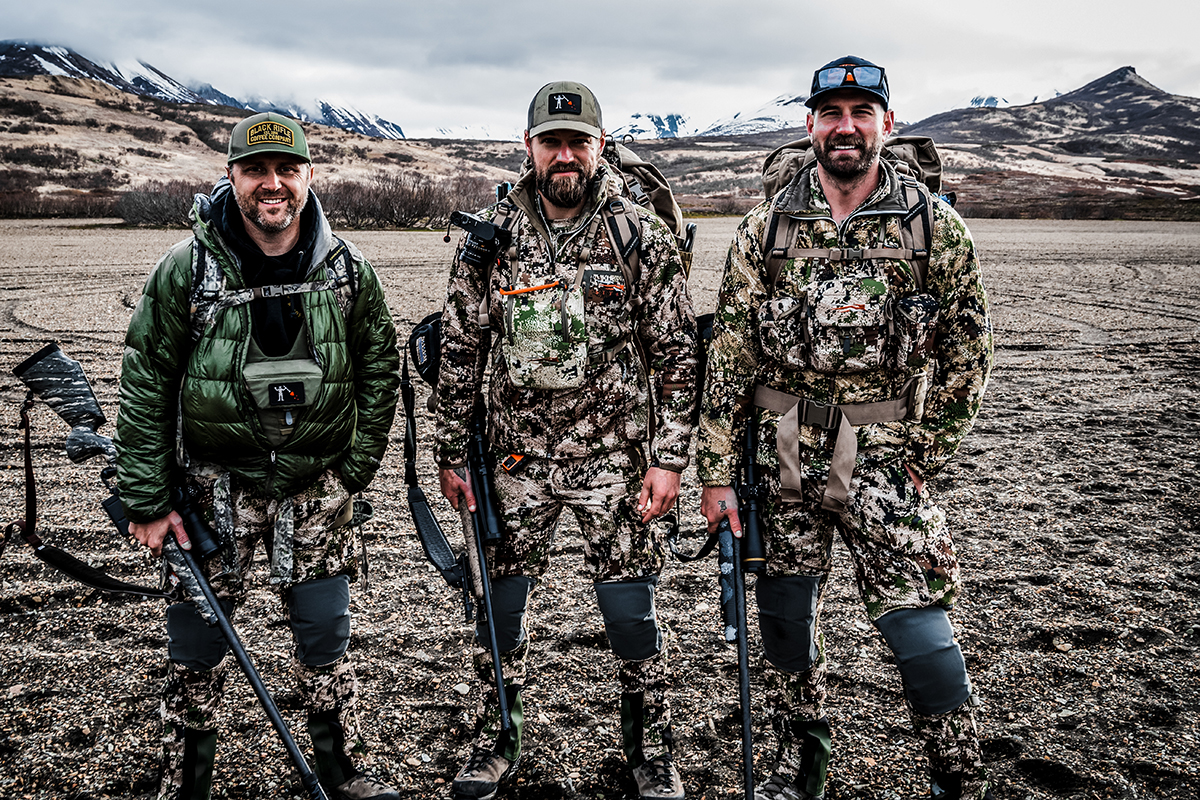
“Then, when you’re in brown bear territory, you’re like, these things will eat grizzly bears. So now, the things that you’re really afraid of in the lower 48, which are grizzly bears, those things are eaten by brown bears.”
While many people assume that Kodiak Island produces the biggest brown bears, the record-breakers actually come from the Alaska Peninsula, where the group will be hunting.
“They’ll eat cubs, the smaller sows, they’ll eat other males,” he adds, which is why it’s important for hunters to kill the bigger bears so the overall population can flourish.
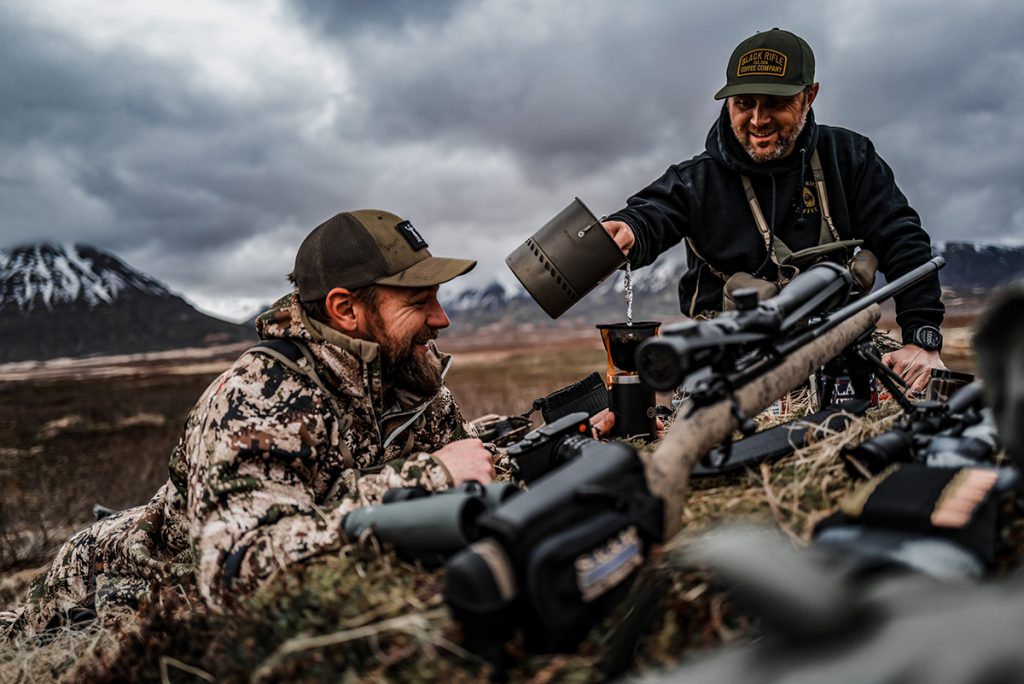
“The [BRCC] partners — Mat, myself, and Logan — going out and participating in a bear hunt, I think is one of the most iconic and aspirational hunts that you can go out and do,” Hafer says. “I’ve been wanting to do this for years, my [whole] adult life.”
Even though the trio have been business partners for seven years, they’ve never been on a hunt like this: sharing a tent and 6 square feet of sleeping space in the remotest spike camp possible for more than two weeks while chasing one of the biggest, most dangerous animals in the world.
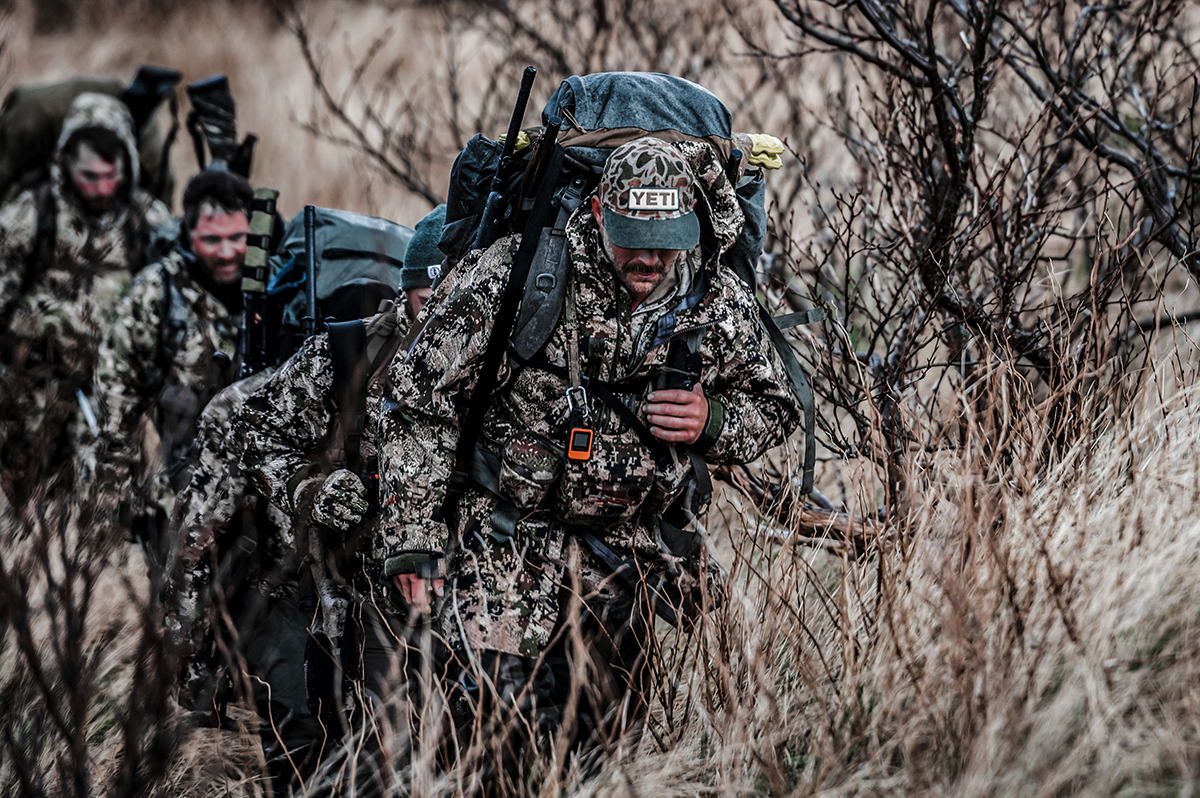
“I’ve never really even considered going on a hunt like that before just because it’s not something that I’ve read into in the past, you know,” Best says. “I deer hunt and all that, but once I started to understand what we were going to be doing and how we would be doing it, I was very intrigued.
“A brown bear hunt is like the precipice — it’s the once-in-a-lifetime hunt. Most people never have the opportunity,” Best adds. “I mean, I’ve watched plenty of shows about it, and it’s just something you’d never believe that you could actually go do.”
Logan Stark’s Rifle and Training at FTW Ranch in Texas
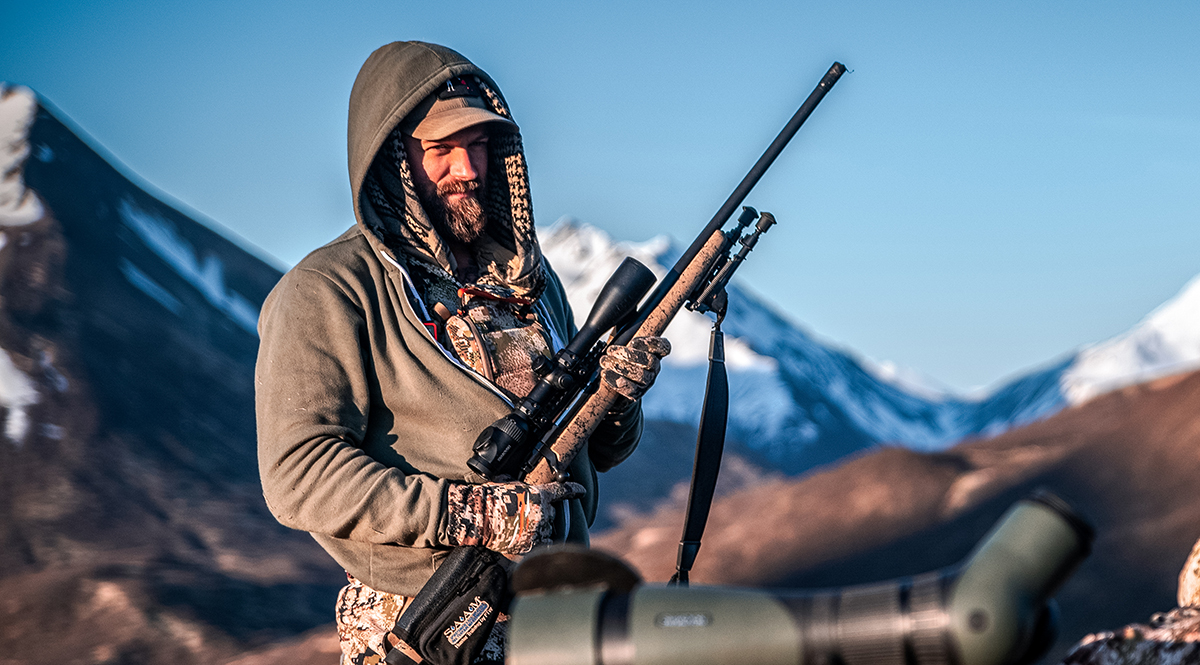
After all three men cleared a three-week window during the hunting season, they began their journey to their remote bear camp in Alaska. But first, Stark headed to FTW Ranch in Barksdale, Texas. It’s a premier shooting facility with training courses like no other that are specifically tailored to improve hunters’ skills.
Stark completed the Sportsman’s All-Weather All-Terrain Marksmanship (SAAM) course under the tutelage of Justus Ballard of the FTW SAAM team.
“The land here is absolutely incredible,” Stark says of the sprawling FTW facility. “They do everything: hunting prep courses, long-range-precision courses — a bunch of the Tier One military units come out here to train.”
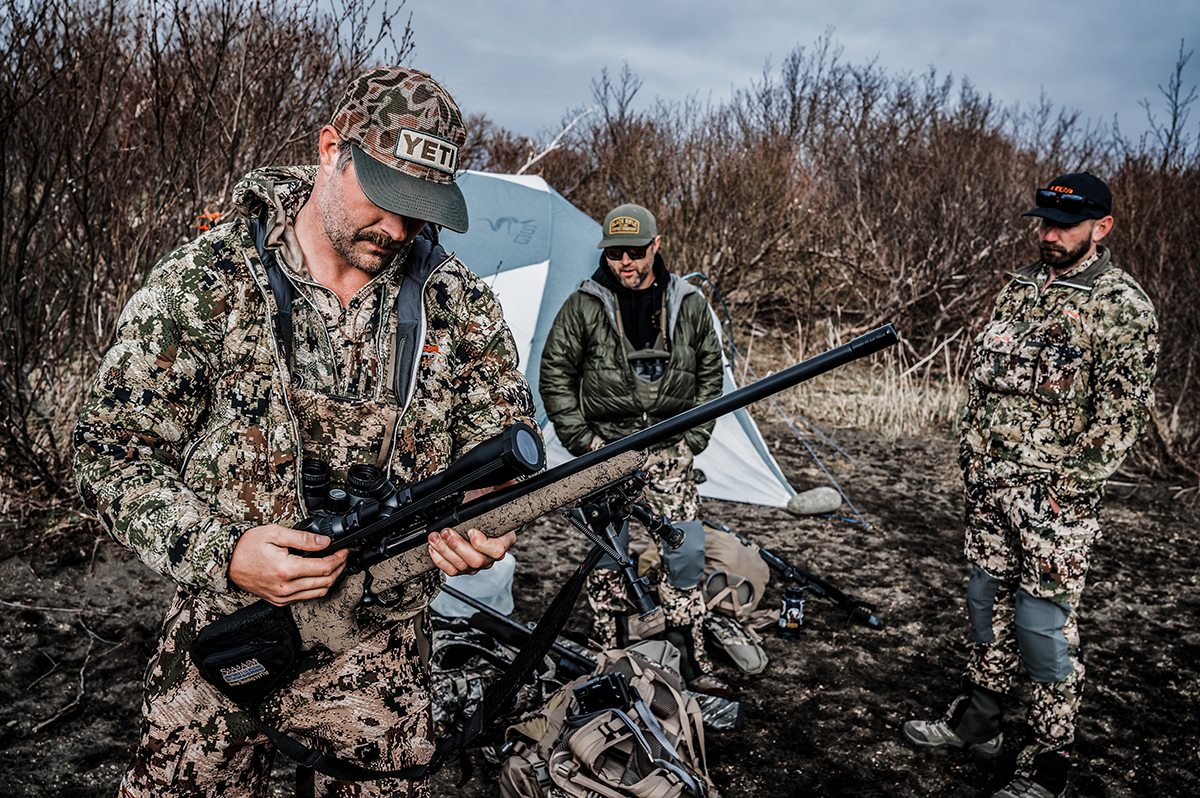
GOOD STUFF – Spartan Kick Your Tastebuds With the BRCC Ready To Drink 300, Vanilla Bomb
The bolt gun Stark chose as his bear rifle is chambered in .357 Ruger. Ruger and Hornady designed the cartridge in 2007 as a dangerous-game round that would be more powerful than the venerable .375 H&H while still fitting in a standard-length rifle action.
“It’s got a nice claw extractor on the side there,” Ballard says of Stark’s custom rifle. “So, it’s a dangerous-game rifle where, as soon as that round comes out, it’s grabbed by that claw extractor to make sure we have good, positive feeding when we go into dangerous-game country.”
The rifle is topped with a sweet Swarovski Z6(i) 3–18×50 riflescope.
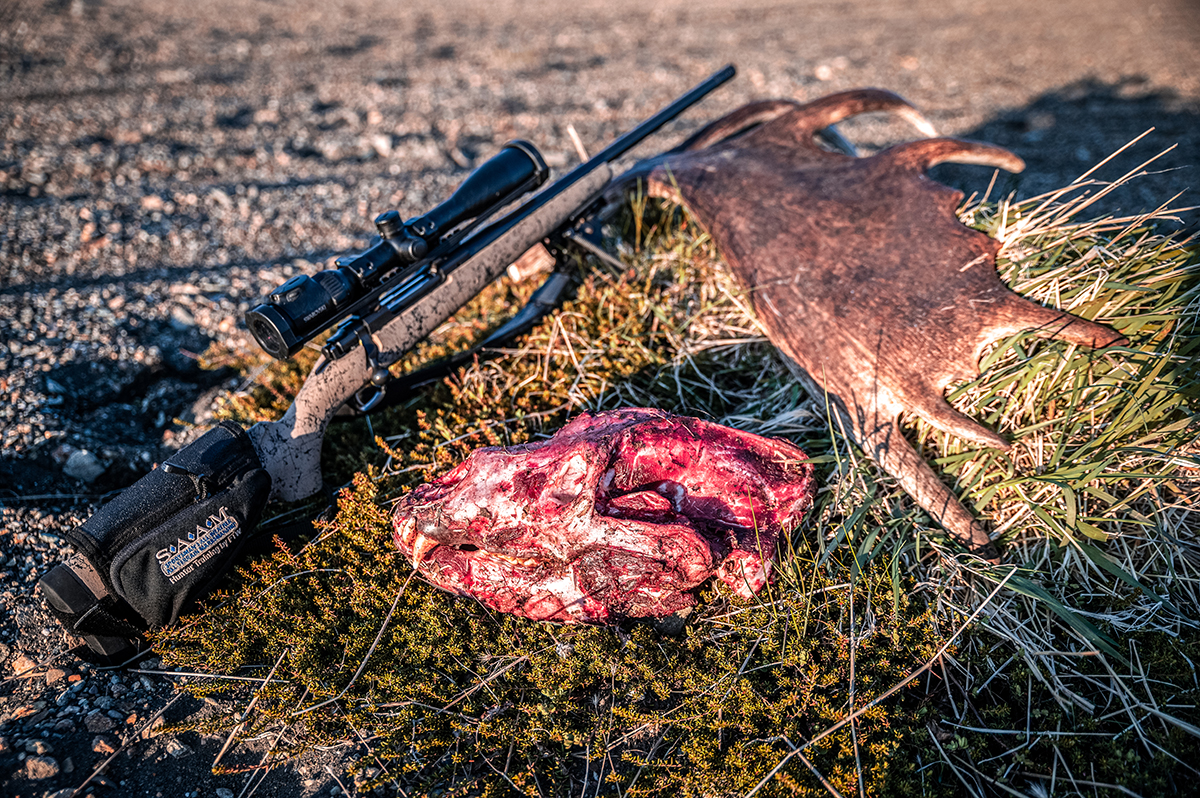
“The deciding factor for me, as we looked at a few different scopes, was that the Swarovski has the illuminated (BRH) reticle, which just helps immensely when you need that quick target acquisition,” Stark says. “Your eyeball just immediately goes to that illuminated reticle.”
Stark put that to the test as he used his rifle to navigate the FTW course, which is designed to mimic real-life hunting scenarios, which you can check out in the video above.
Alaska Bear Hunt Part 2: Three Very Different Bear Guns
The second installment of this one-of-a-kind Alaska hunting adventure sees Hafer, Best, and Stark take a small plane (they only get smaller after this) to a remote, off-season fishing town that’s all but deserted.
Once there, they inventory their gear and use the stopover to check the zeroes on their bear rifles, which is an absolutely necessary step after the guns and optics have been thrown in and out of planes, trains, and vehicles across half the North American continent — no matter how awesome your Pelican case is.
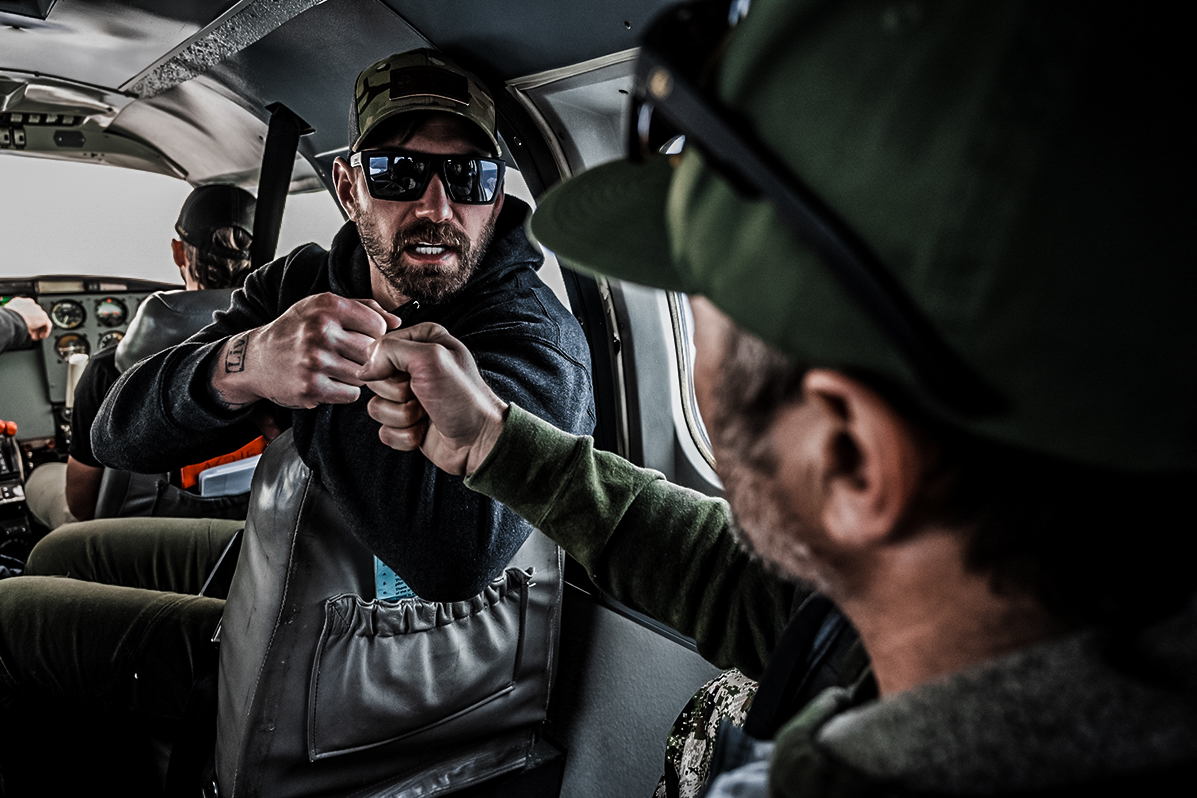
The guys get into the small craft that will take them to the last bit of civilization they will see before even smaller Piper Super Cubs take them on the final leg of their journey and drop them at their remote hunting camp on the Alaskan Peninsula.
“You know, complex logistics getting into places is fun,” Hafer says. “That’s part of the adventure: going into the backcountry, taking planes, trains, and automobiles to get someplace really remote, and then being able to apply a skill set in order to get even farther — that I really enjoy.”
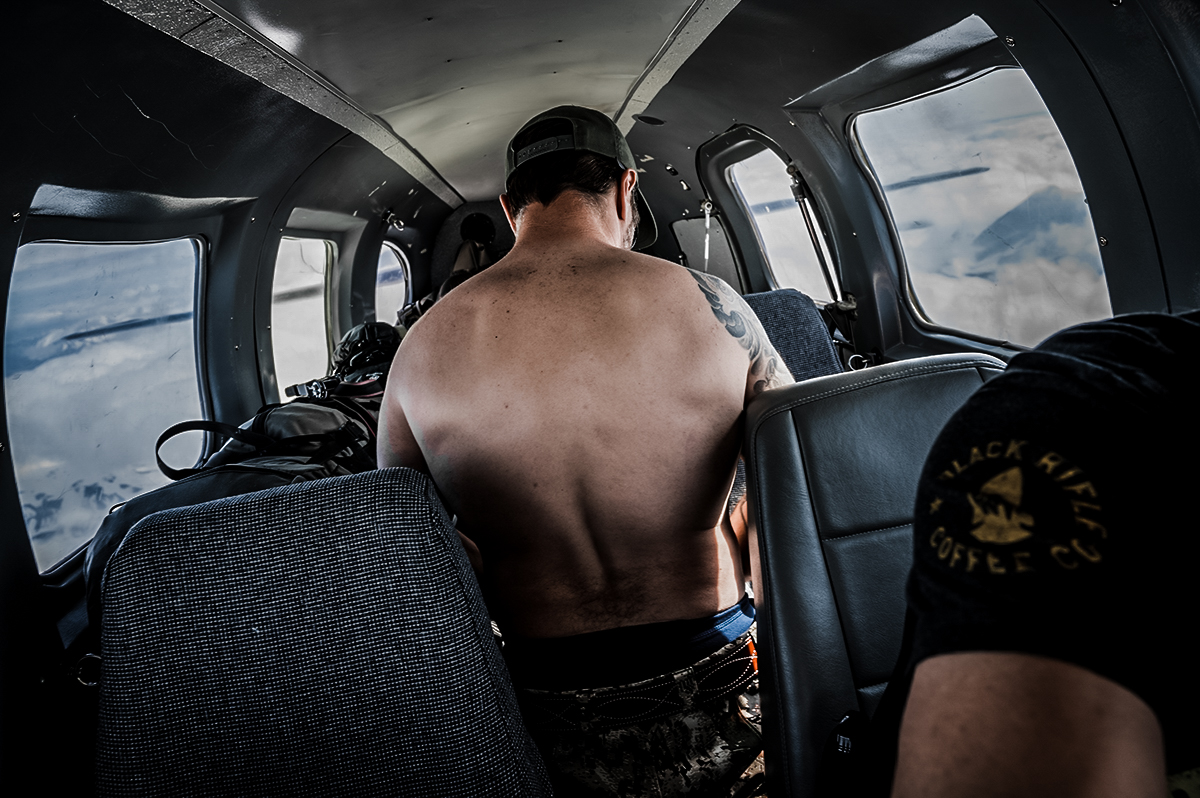
While Best keeps a cautious eye on the ice building up on the plane’s wings as they fly over absolutely frigid ocean waters and calculates how long he could survive if they went down (he concludes about 10 minutes), the plane’s heat vent is dumping on Hafer, who strips down to the waist before the morning’s coffee races through him.
“I put my hand back there, and it was like 100 degrees,” Best says. “I look back, and Evan’s got his t-shirt off, just sitting in the back. He’s like, ‘I gotta piss!’”
“I pissed in everything,” Hafer says. “I pissed in my coffee mug, and I pissed in two plastic bags.”
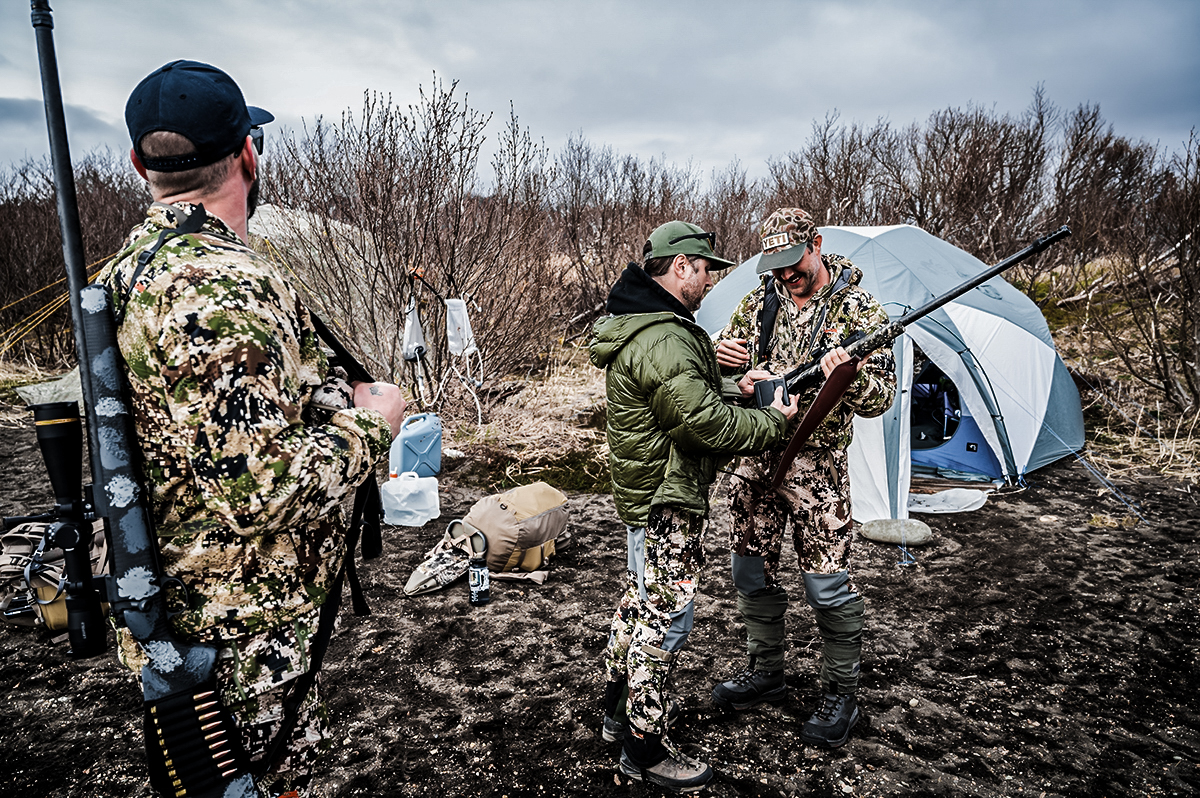
Once they touchdown in the sleepy fishing town, the BRCC hunters start to feel like they’ve really arrived in Alaska, and they get down to business to make sure they’re dialed for the hunt.
“I’m a hunter. That’s who I am,” Hafer says. “That’s part of my DNA. I hunted people for a good portion of my life.
“I’m proud of hunting. I do it to feed my family. I do it for, you know, trophy and conservation reasons. I like the remoteness of it. I like the adventure of it. I like the sport. It’s an important part of conservation. And it’s also an important part of, I think, being human.”
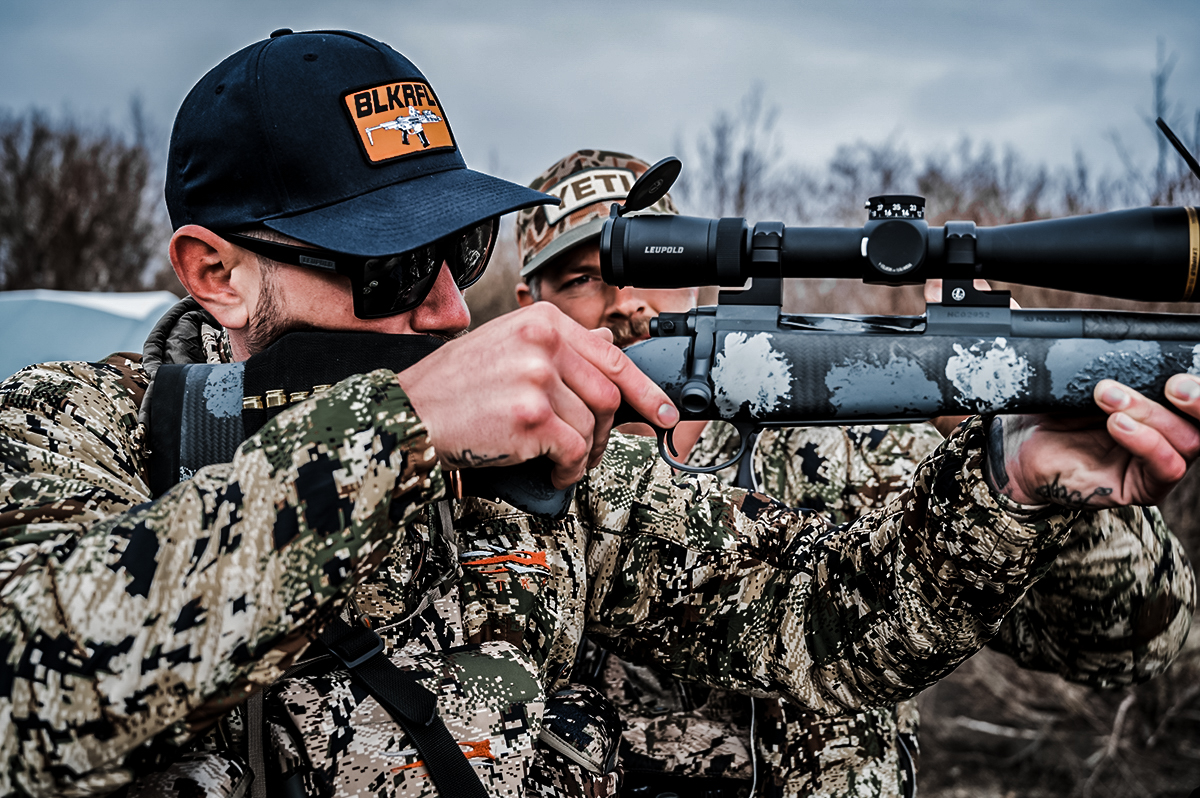
Hafer, Best, and Stark chose different chamberings for their bear bolt guns. As explained above, Stark went with a modern dangerous game cartridge, the .375 Ruger.
Best is running a .33 Nosler rifle with a Leupold scope, and Hafer went with a beast of a rifle and cartridge, a custom, lightweight rifle chambered in .338 Lapua Magnum, also topped with a Leupold optic. It sports a Proof Research barrel and a Surgeon stock.
“It’s just ridiculous,” Hafer said. “I built it because I needed what I felt was the closest thing to artillery [I could have]. You almost have to wear a mouthpiece with this when you shoot it because it’s so light, and it’s a .338 Lapua, which is a nasty, big round. It will vibrate your eyeballs when you’re shooting it. It’s horrible. But it’ll put something down.”
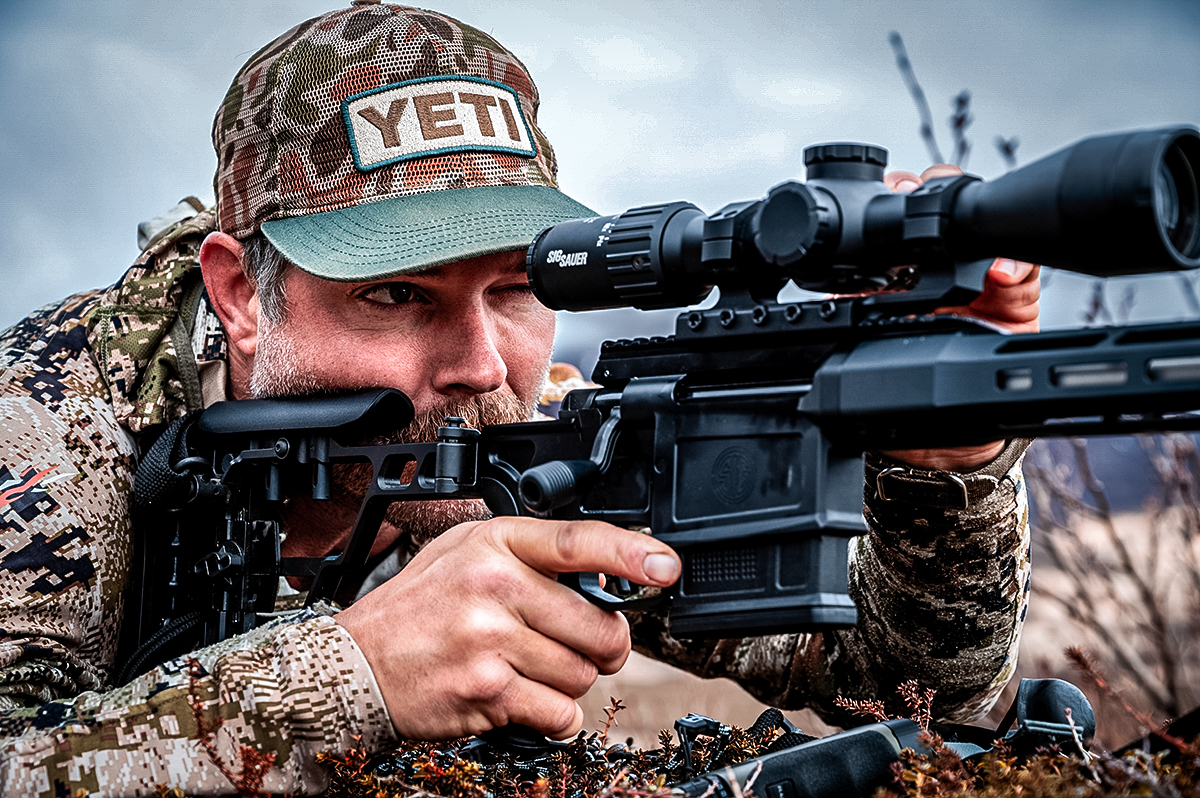
Hafer says his rifle has a sub-1-pound trigger, and Best’s reaction when he dry fires it indicates Hafer isn’t exaggerating. He says you could set it off by sneezing.
“I like it like that,” Hafer says.
After confirming their various zeroes on some convenient junkyard items, the next step is climbing aboard the tiny Piper Super Cub planes that will drop the crew at bear camp so that the hunt can begin!
Alaska Bear Hunt Part 3: Life in Bear Camp
In the third episode of the Alaska bear hunt chronicles, Hafer, Best, and Stark climb into a Piper Super Cub bush plane that will drop them one by one at the spartan bear camp the group will call home for the next 15 days.
Best compares the bush plane to a dune buggy with wings.
“I think a dune buggy may be giving it too much. A lawnmower with wings would be more accurate,” Stark says.
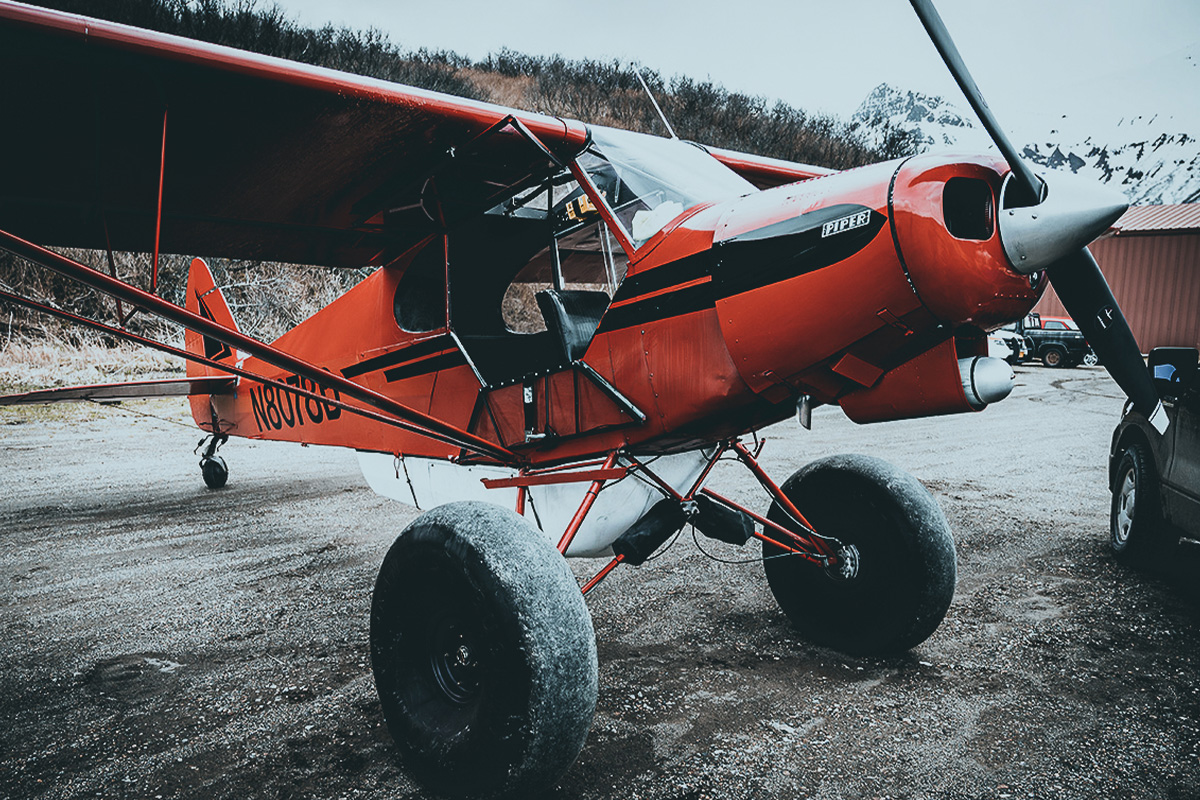
“That was my favorite part of the travel,” Best says. “Because you’re flying through these valleys at a really low altitude. I mean, it must have been, like, 800 feet, and you’re just kind of following the Earth and going through the hills and valleys to get to the landing site. For me, that was just frickin’ awesome.”
“We landed in an old lake bed,” Hafer explains. “There are no roads. There’s no humanity. There’s nothing for hundreds of miles, so you really have this sense of being disconnected from society and technology in a way that very few people have the opportunity to do.”
When they finally arrive, they meet with legendary Alaska guides Cole Kramer and Will Wilks.
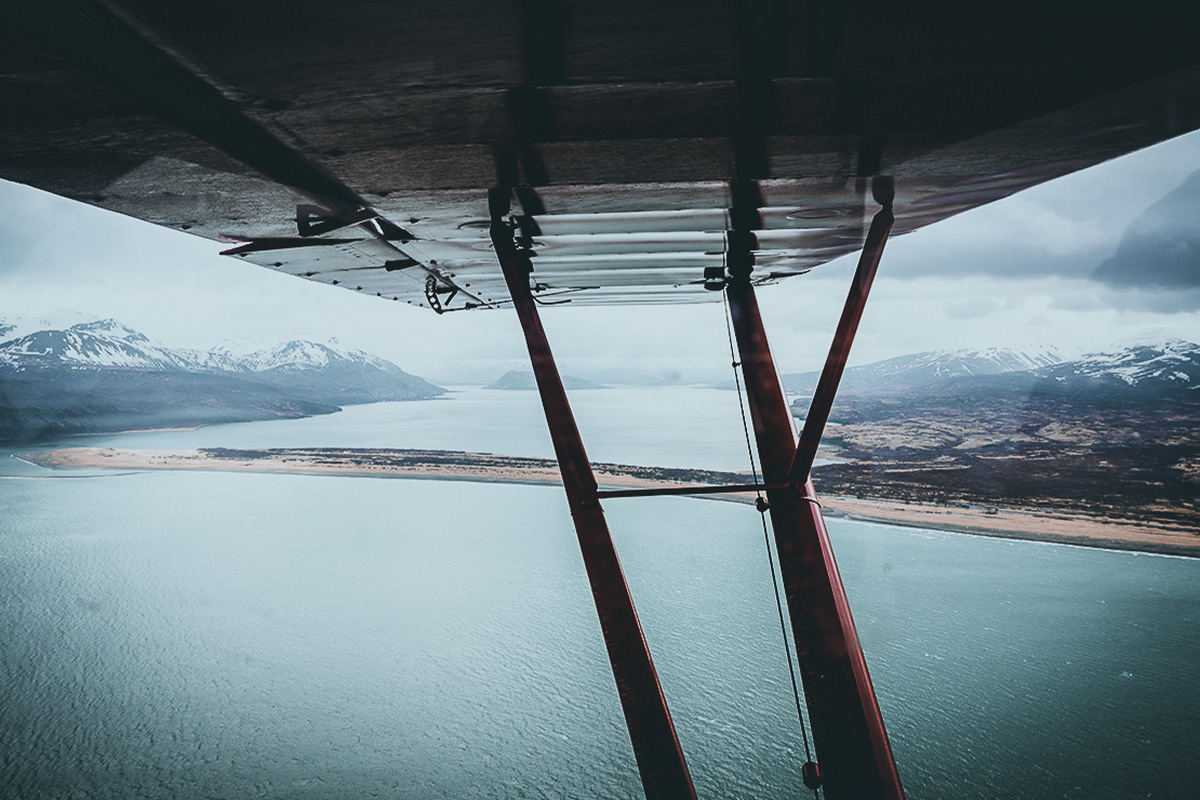
“I didn’t want to go out and do it with some rando,” Hafer says. “I wanted to know who I was going out and hunting with. I have a relationship with Cole. He came out and participated in Veteran Adaptive Athlete Shoot (VAAS). He volunteered a bunch of his time, and he’s obviously one of the most accomplished guides in Alaska.”
The group sets up camp far from anything remotely resembling civilization.
“It is the definition of God’s country,” Best says. “It’s not touched by humans. You have some hunters that go out there, but you leave it better than when you came. It’s cool to see something that wild.
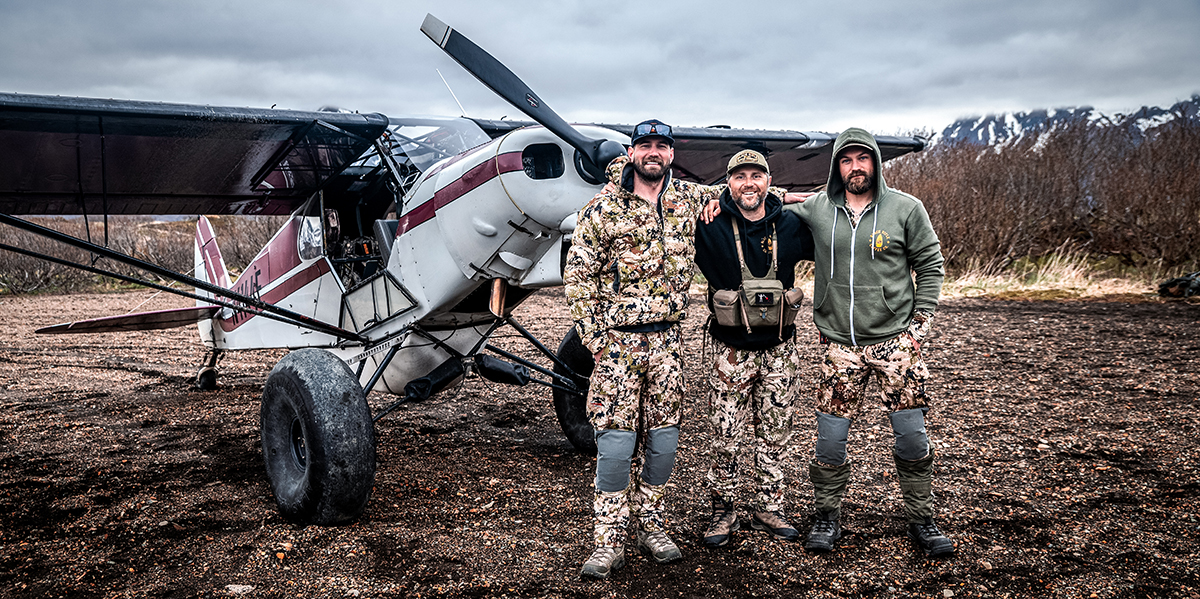
“If you break a leg, you’re in some serious shit out there. No one is coming for hours upon hours.”
It’s also bear country, which means if you’re living there for a while, you stick to freeze-dried meals, trail mix, and anything you can heat up over a camp stove — no cooking fires or campfires.
“Smoke and bears don’t get along because their noses are so good. You don’t want to leave a scent trail because they’ll leave,” Best explains.
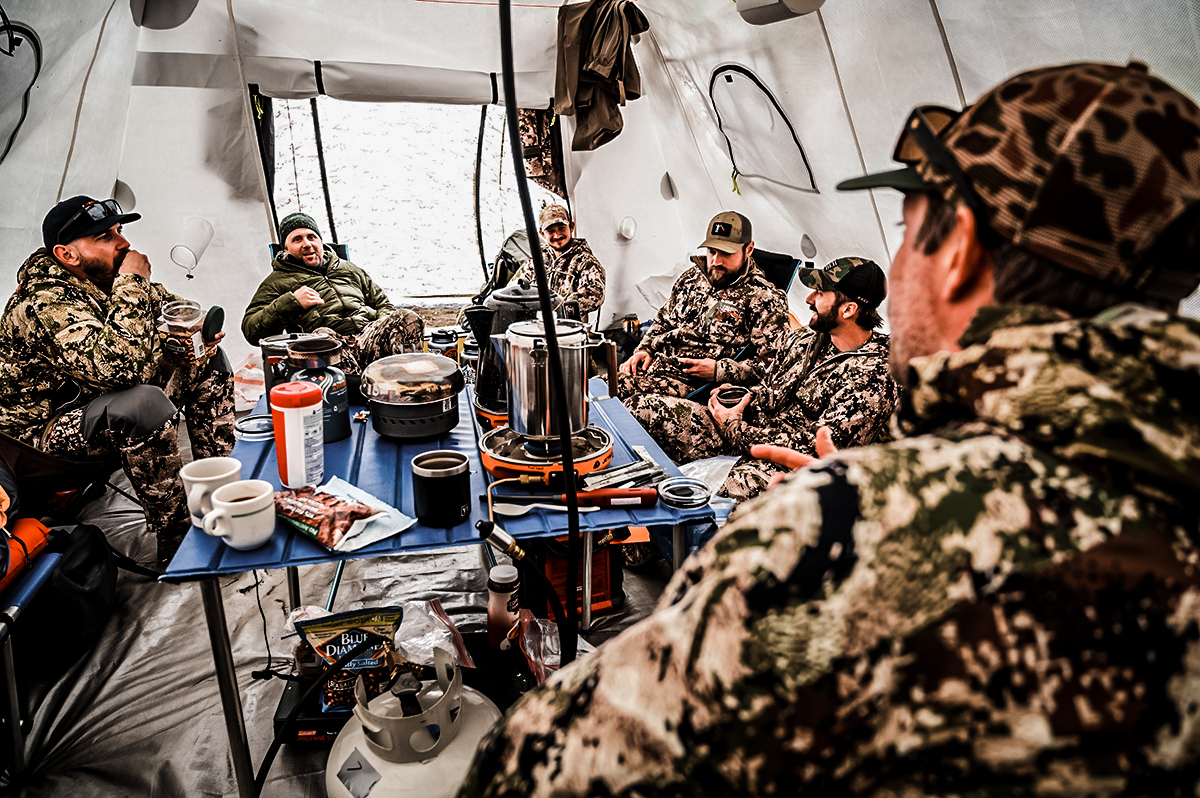
The next step in the hunters’ big adventure is hours and hours of endless glassing in shitty weather, huddled under a tarp as they put in time and pain to gain big rewards in the end.
Alaska Bear Hunt Part 4: Pushing Through The Pain and Glassing Your Ass Off
Although an Alaskan bear hunt is bucket-list stuff for a lot of hunters, the daily grind of a three-week hunt is far from rainbows and roses.
“The best pattern we can get on is we’re up there in the morning at 7:30 or 8:00,” guide Cole Kramer explains. “Then we’re going to eat lunch around one, and then we’re going to have a nap. We’re going to fall asleep because that’s what the bears do in the middle of the afternoon.”
“What would you do if you were a bear?” Best ponders. “I’d probably hang out next to the river. I’d be looking for fish — probably fill my belly full of salmon.

“Then I’d try to get a nice sow, put a couple of cubs in her, settle down, get a white picket fence, and then realize that bored me about a week later. Then I’d run up to the hilltop and try to kill other bears.”
Hafer, Best, and Stark wake up on their first morning at their base camp in the remote Alaskan wilderness. Although the scenery is jaw-droppingly gorgeous, their accommodations are beyond rustic, and sleeping conditions are pretty freakin’ shitty, although they aren’t the worst these guys have experienced.
“I’ve woken up in far worse places, that’s for sure,” Best says after climbing out of his tent.
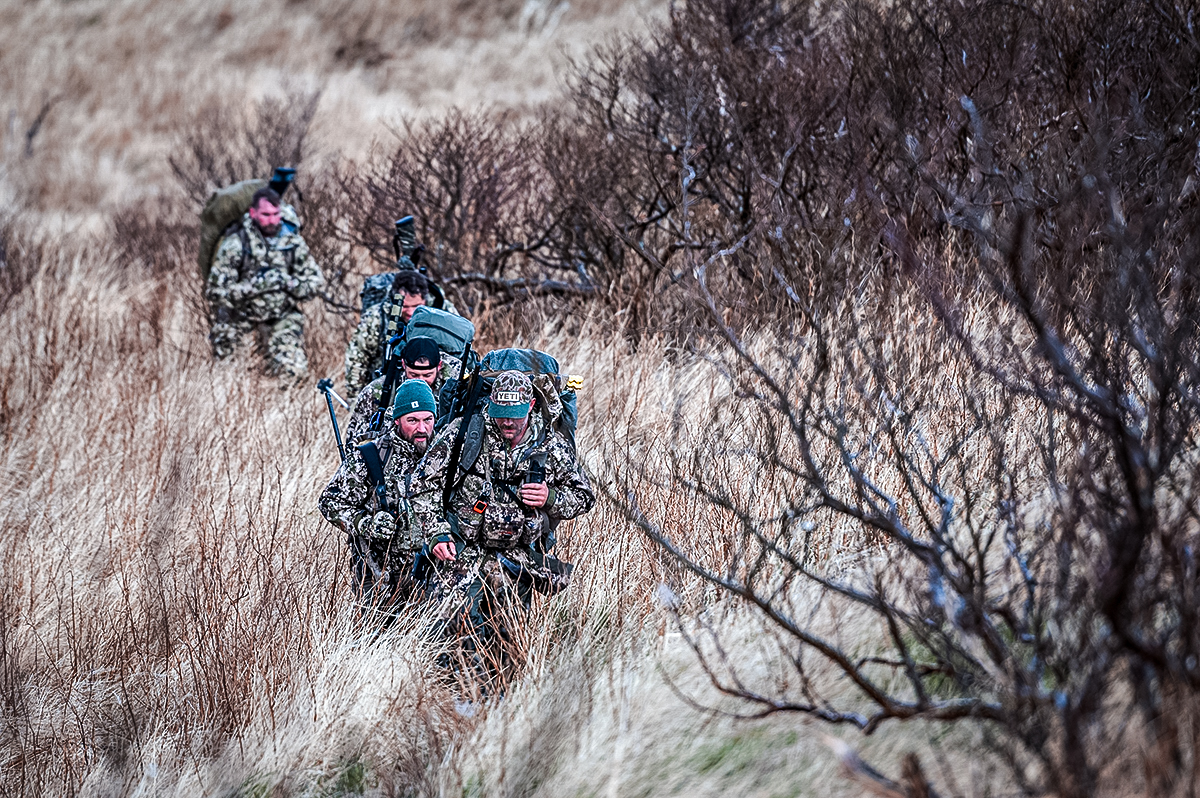
Trevor Thompson/Black Rifle Coffee
“One of the interesting things about Alaska is that there were only about three or four hours of actual night,” Best says.
“It didn’t get dark until 12:30,” Stark adds.
Thankfully, they have plenty of coffee to help them ramp up some energy for day-long glassing sessions trying to spot bears on the landscape.
“Every morning, we would have our coffee bright and early in the arctic oven tent, get all of our stuff ready, and then start heading out,” Hafer says.
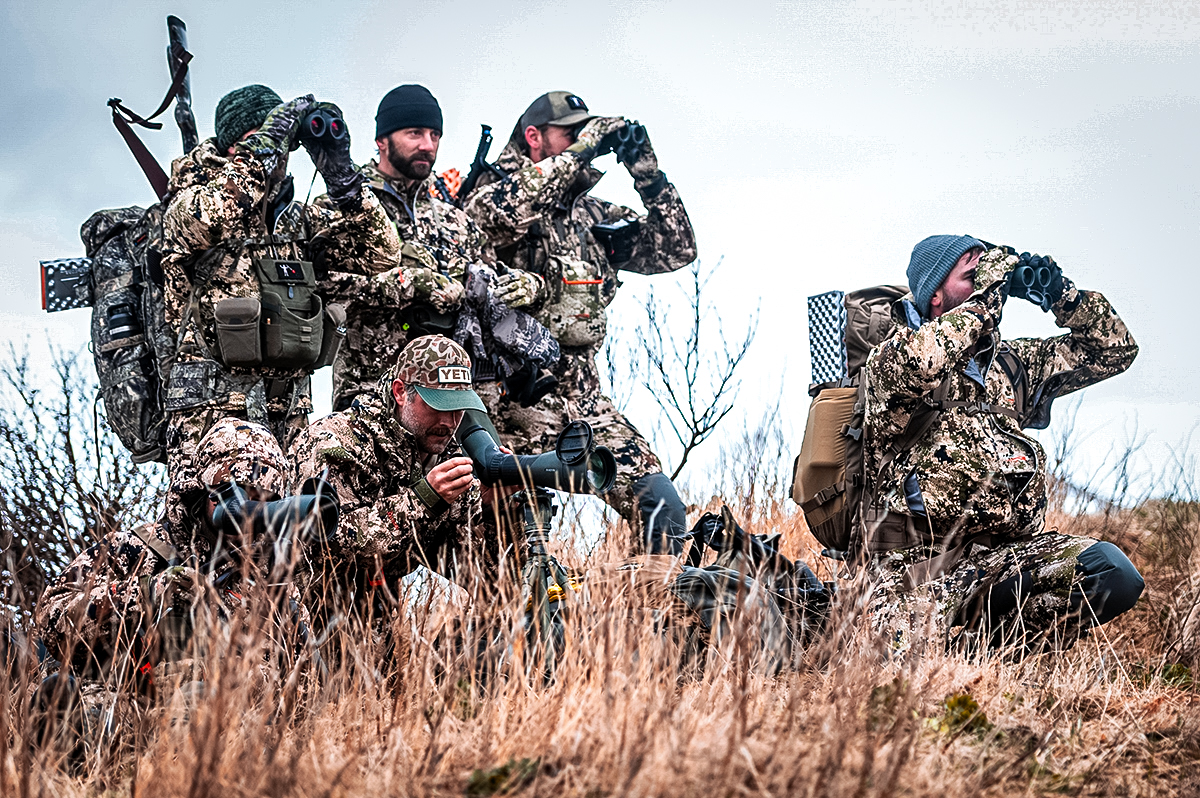
Spending 16 hours on an Alaskan hillside glassing for brown bears isn’t exactly easy, plus it’s about as boring as watching paint dry.
“The first couple of days, you’re essentially just sitting there and glassing,” Best says.
“It’s boring as shit,” Hafer says. “I don’t sit well. It’s not what I do.”
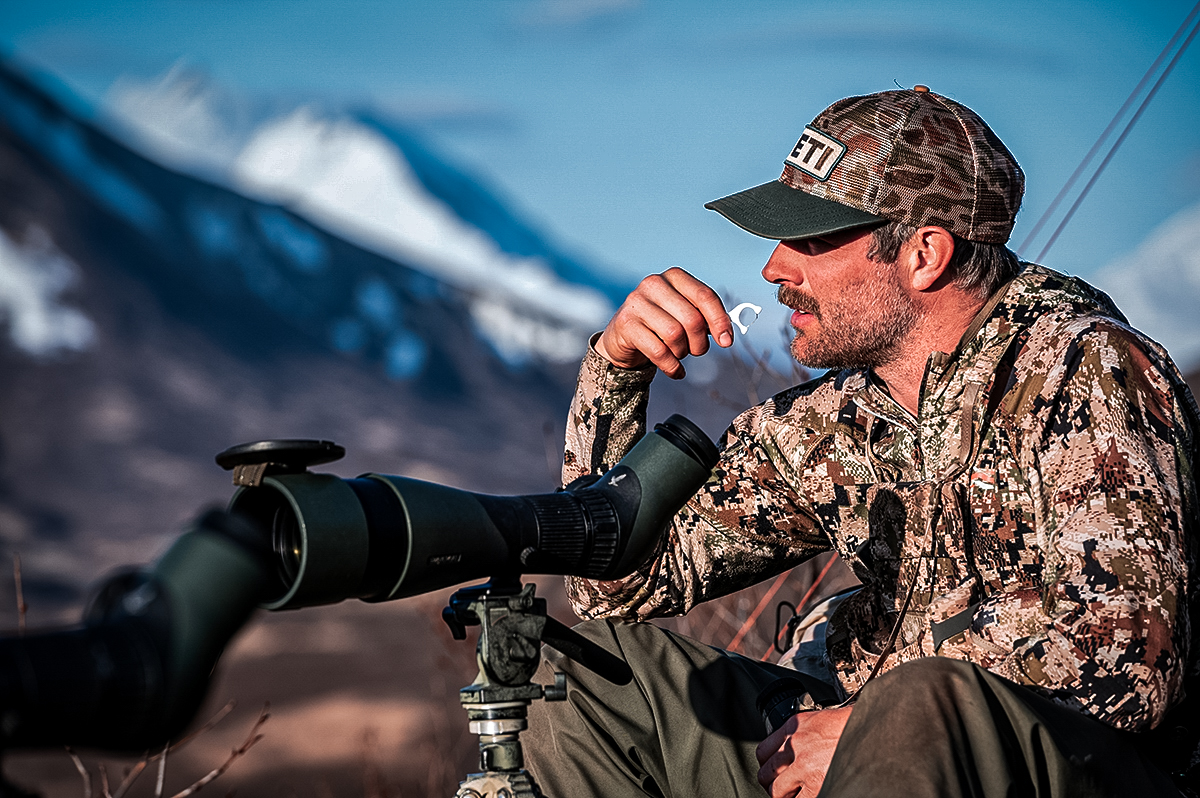
After sitting for hours, staring through an optic, everything looks like a bear, especially when you don’t have a ton of experience spotting them.
“I didn’t necessarily know the extent of glassing for 16 hours a day on a hillside,” Best says. “I was not ready for that, especially because the guides were so trained on how to spot bears. I couldn’t see anything because I didn’t know what I was looking for.”
Identifying brown bears moving through vegetation across the rocky landscape isn’t as easy as it might sound. It’s a skill best learned through experience. Since this is Best’s first bear hunt, he struggled.
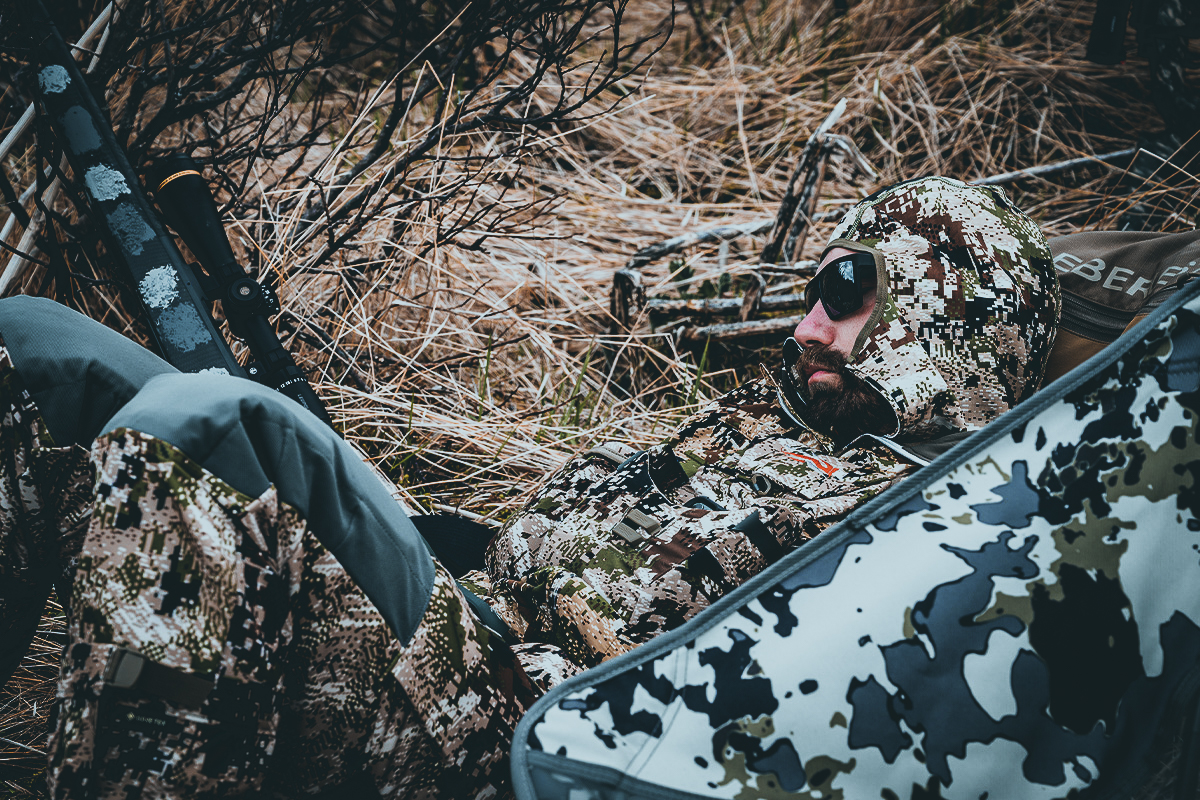
“You’re looking for a combination of things, but you’re always looking for obviously a bear, and that can be interpreted a lot of different ways,” Hafer explains. “You’re like okay is that a bush? Is that a moose? Is that a rock? And you’re doing your best not to die from sheer boredom.”
Thankfully experienced guides Cole Kramer and Will Wilks, who have to spot bears for a living, have eyes fine-tuned for sorting shootable bears from big rocks, moose, and everything else that starts looking like a bear after hour 12. The guys finally get their first bear sighting of the trip at about 4,000 yards.

“They look a lot darker than I thought they would,” Best says.
Although they see several bears during the monotonous sit, no one spots a shooter. The guys are left trying to fight the tedium by continuing to goof around, nap on hillsides, and fantasize about life as an Alaskan brown bear.
Alaska Bear Hunt Part 5: Embracing the Alaskan Suck
Hunting usually involves more waiting than anything else. Still, waiting to find a shooter bear in Alaska can be excruciating in a way most hunters never get to experience.
In the fifth installment of the BRCC Alaska Bear Hunt saga, the suck ramps up several notches for Hafer, Best, and Stark.
“It’s super-harsh,” Stark says. “It may look nice and forgiving, but once you get into it, it’s not at all.”
“It was like living in a National Geographic TV show because the climate is just fucking brutal up there,” Best explains. “Sometimes we would get 40-mile-an-hour gusts of wind, with sleet and rain just shooting you in the face.”
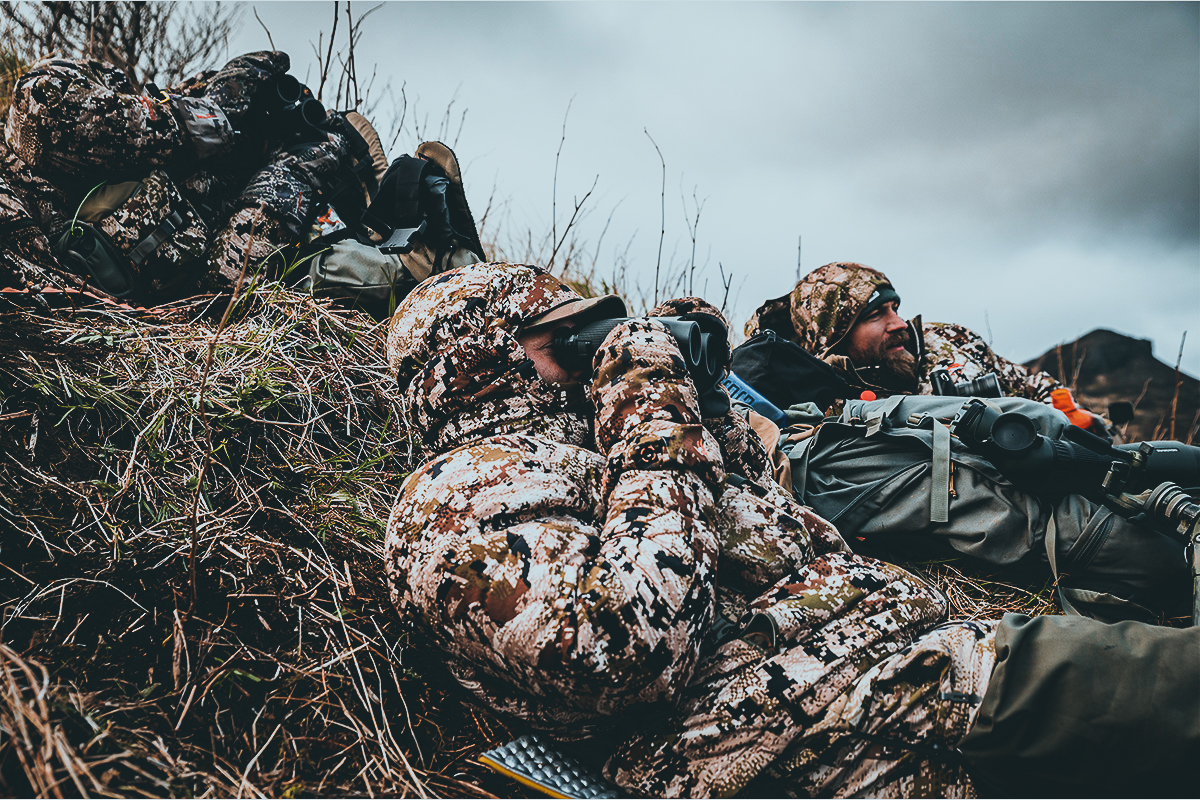
“It’s brutal,” Hafer adds. “Always windy. Always wet. Always cold. It’s definitely not too hot. That’s the nice thing about Alaska.”
The Last Frontier’s cold, wet, windy conditions made riding out Day Five of their two-week hunt extra shitty. The guys called it quits after just eight hours of glassing with no bears in sight. Best makes it known that Kramer was responsible for everyone heading back to base camp.
“We didn’t quit. We were like, ‘Let’s stay out.’” Best says.
“Well, he did entice us with drinking alcohol,” Stark replies.
“He did say, ‘Let’s drink whiskey and get warm,’” Best adds.
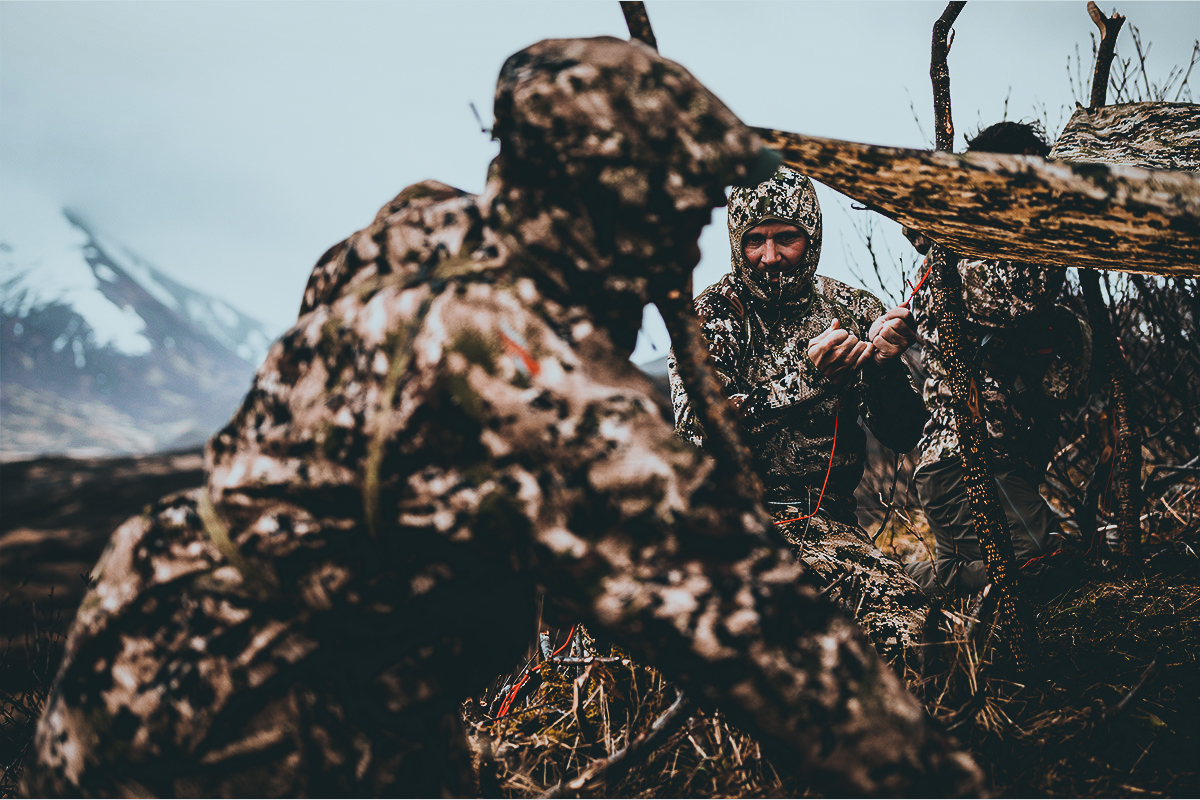
Despite the heinous conditions, Best admits there is something therapeutic about the solitude of glassing for hours on a windy hillside in the pelting rain.
“There’s an interesting psychological component,” Best says. “There are all these societal things that we take for granted every single day, like cell service and running water, the whole nine. It took me about a day to acclimate to not having any [of that].
“I purposely didn’t bring my phone. I just left it because we didn’t have cell service, obviously. It was challenging the first day or two because a lot of the time, you have to be quiet up there, glassing on the mountain. You’re just left to your own thoughts. It’s very healing, honestly.”
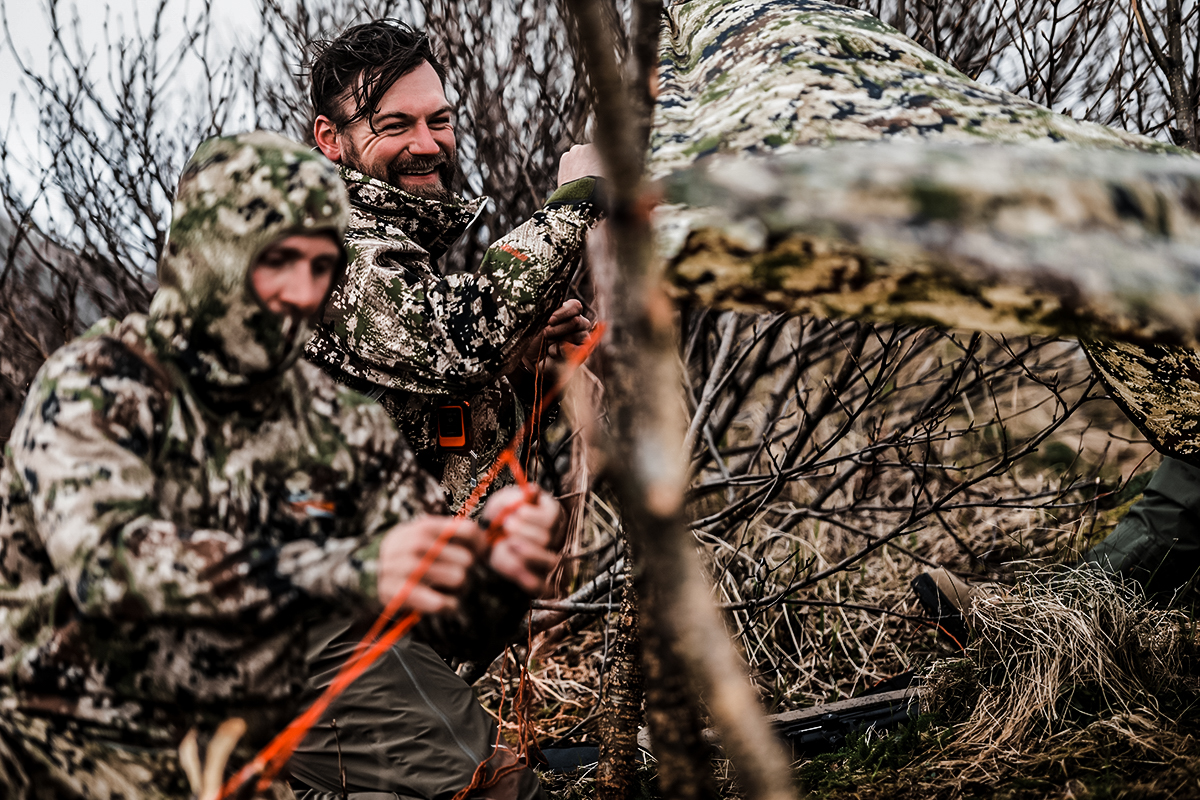
For Stark, who served as a scout sniper in the Marine Corps, the waiting process felt all too familiar.
“One of the things I was classically trained to do was sit in a hide and do nothing. Do not move all day and just look through a glass,” Stark says, “If anything, it was more reminiscent of a lifestyle that I used to do.
“At the same time, you start thinking about all those things, and all those old habits just start coming back. You’re like, ‘Oh yeah, I used to do this for a living.’”
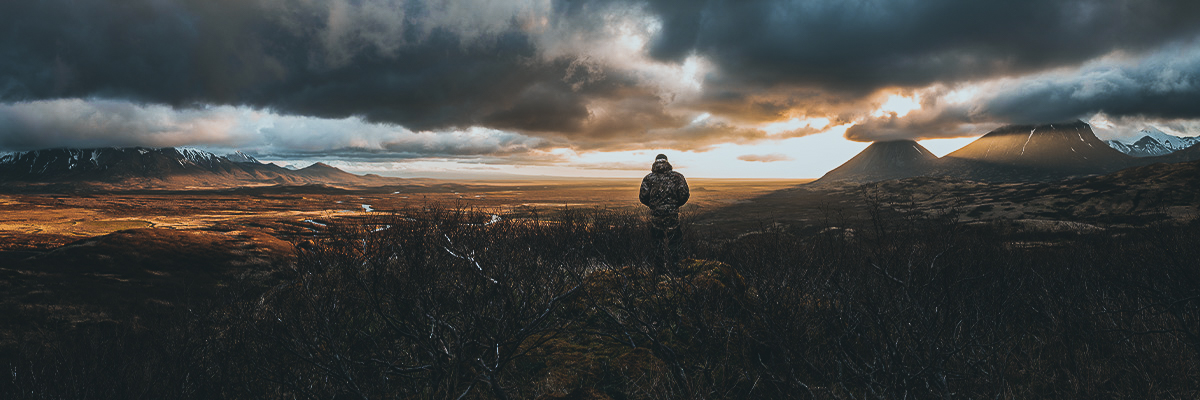
On Day Six, the weather switched from miserable 40 mph winds ripping their tents to gorgeous sunshine.
“We started seeing a lot more bears,” Hafer says. “We started understanding the size of the bear in the optic and what they actually look like.”
While picking out bears that are almost the same color as the landscape and are sometimes thousands of yards away started to come more naturally, understanding which bears were shooters was another matter.
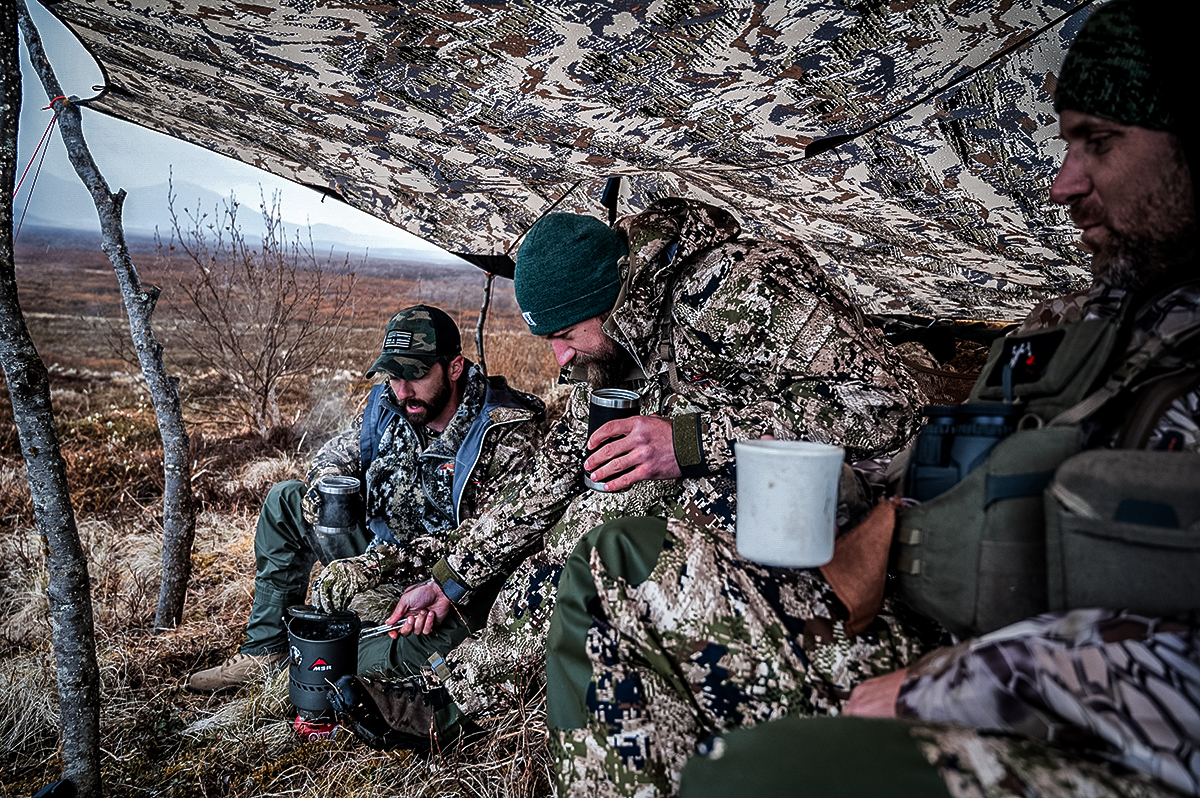
“We put this bear in our sights, and Cole was like, ‘This is a runt. This is a horrible bear,’“ says Hafer.
“We were like, he’s a fucking monster, and he was like, ‘Yeah…no,’” Best says. “We wanted boars, like older, more mature — the ones that are fucking things up. That was a good learning moment for us.”
As the sixth day came and went, the group had more than a third of their trip behind them, and they were still bearless.
“We’re on Day Six, and nobody’s got a bear yet. Per simple math, we should have gotten at least one bear by then in order for all three of us to be successful,” Stark says.

“Everything got a lot more serious. There was a little bit of a tonal shift in attitude. We kept asking Cole, and never once did I see him truly worried. He is very confident in his ability, even in our current situation.”
Having seen several big boars bed down within view of their glassing site, the men climbed into their tents, hopeful for the following day.
“We’re going to reposition in the morning,” Best says. “But everything is theoretical and hypothetical until we’re in it tomorrow.”
Alaska Bear Hunt Part 6: Two Bears in Two Minutes
On Day Seven, Hafer, Best, and Stark wake up champing at the bit. They’re halfway through their Alaskan bear hunt, and they know the clock is ticking.
A lot of hunters in Alaska will take two weeks to fill one bear tag — the BRCC crew had three to fill, and they were going to try their damndest to fill them all.
At the end of Day Six, the group watched a couple of big boars bed down, and they spot a shooter at about 900 yards.
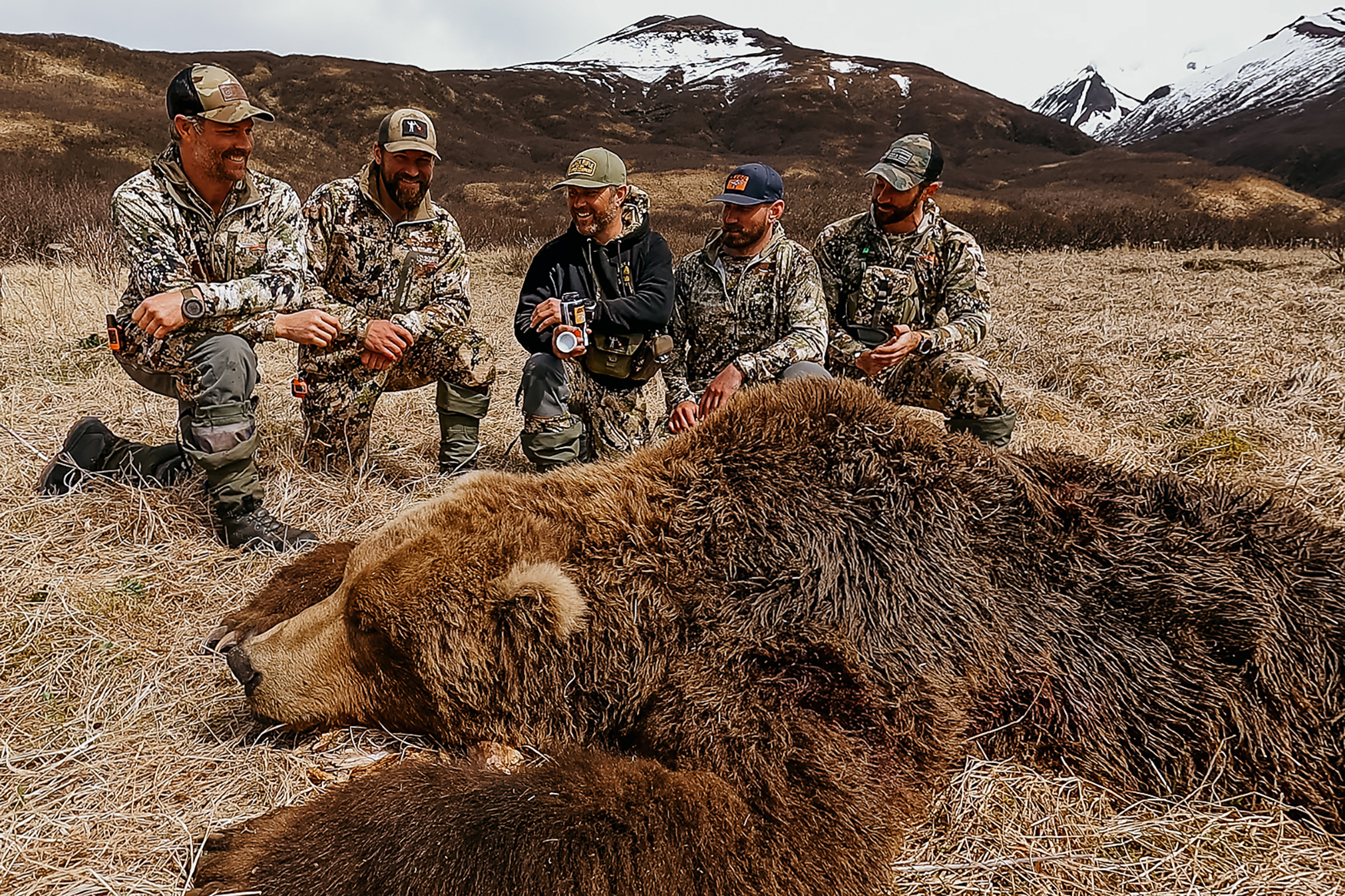
“It was a long way away, but it was big,” Hafer says.
“Let’s go get that bear,” Best says.
After days of boring, monotonous glassing on a hillside, it’s finally showtime. The group rushes to work their way within manageable shooting distance without spooking the bear.
“It’s literally zero to a hundred. You’re just kind of chillin’, low-key glassing, and then in a moment, it’s put your shit in your bag, get your gun ready, and we’re frickin’ haulin’ ass.”
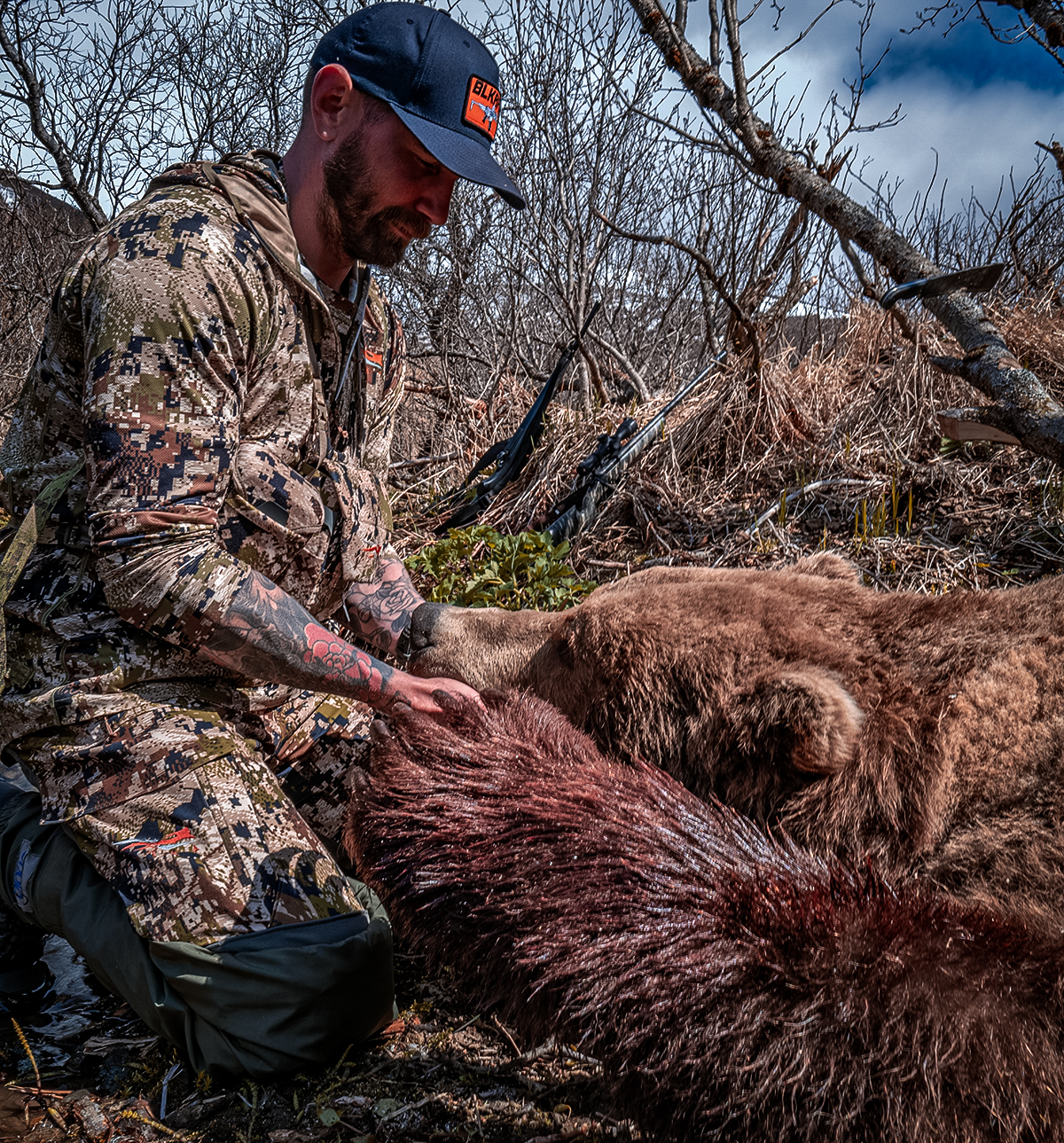
Although the situation has some major urgency, the wind prevents the hunters from taking a direct path toward the bear.
“We had to swoop this huge circle around him to get past the wind issue,” Best says. Circling to get upwind of the bear is far more challenging than it looks.
“This was the first time we really got into the land,” Stark says.
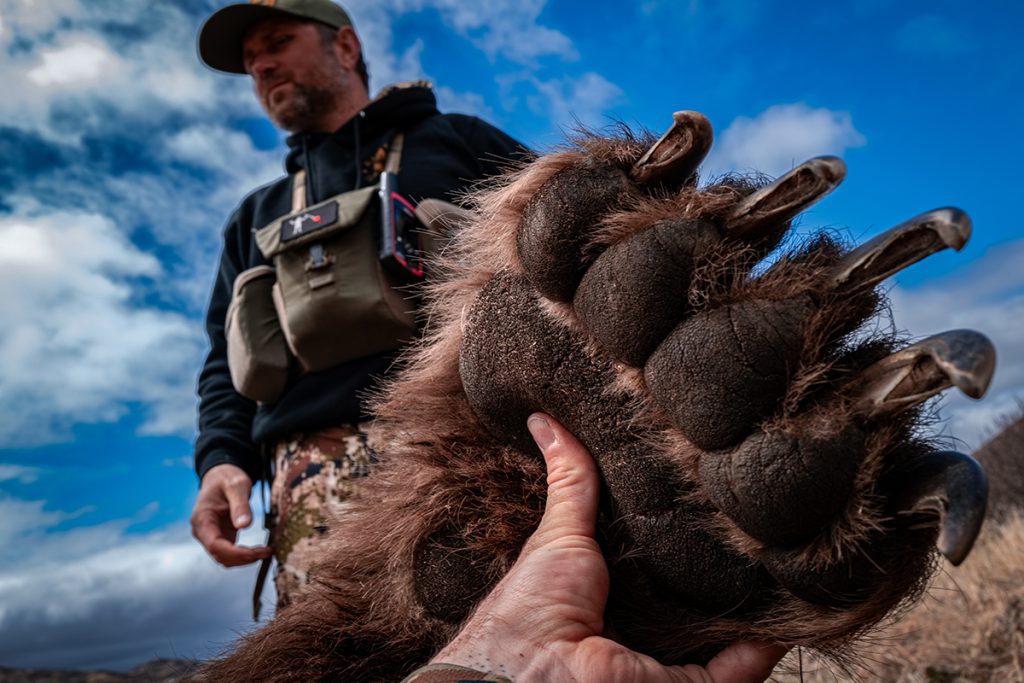
“It was really challenging movement. You have an elevated heart rate at like 150 for 10 kilometers through mixed terrain,” Hafer says. “In Alaska, it’s all alder bushes and going up and down, up and down. It’s just wild.”
RELATED — Bear Attack: Killing a Charging Giant at 5 Yards in the Alaskan Backcountry
ONE HELL OF A DAY FOR SHOOTING BEARS
After the group works its way into a good position a couple-hundred yards from the bear’s estimated position, they set up their rifles and get ready.
“We think this bear is real frickin’ close,” Best says. “We’re looking back at the guide, and he’s trying to communicate, but
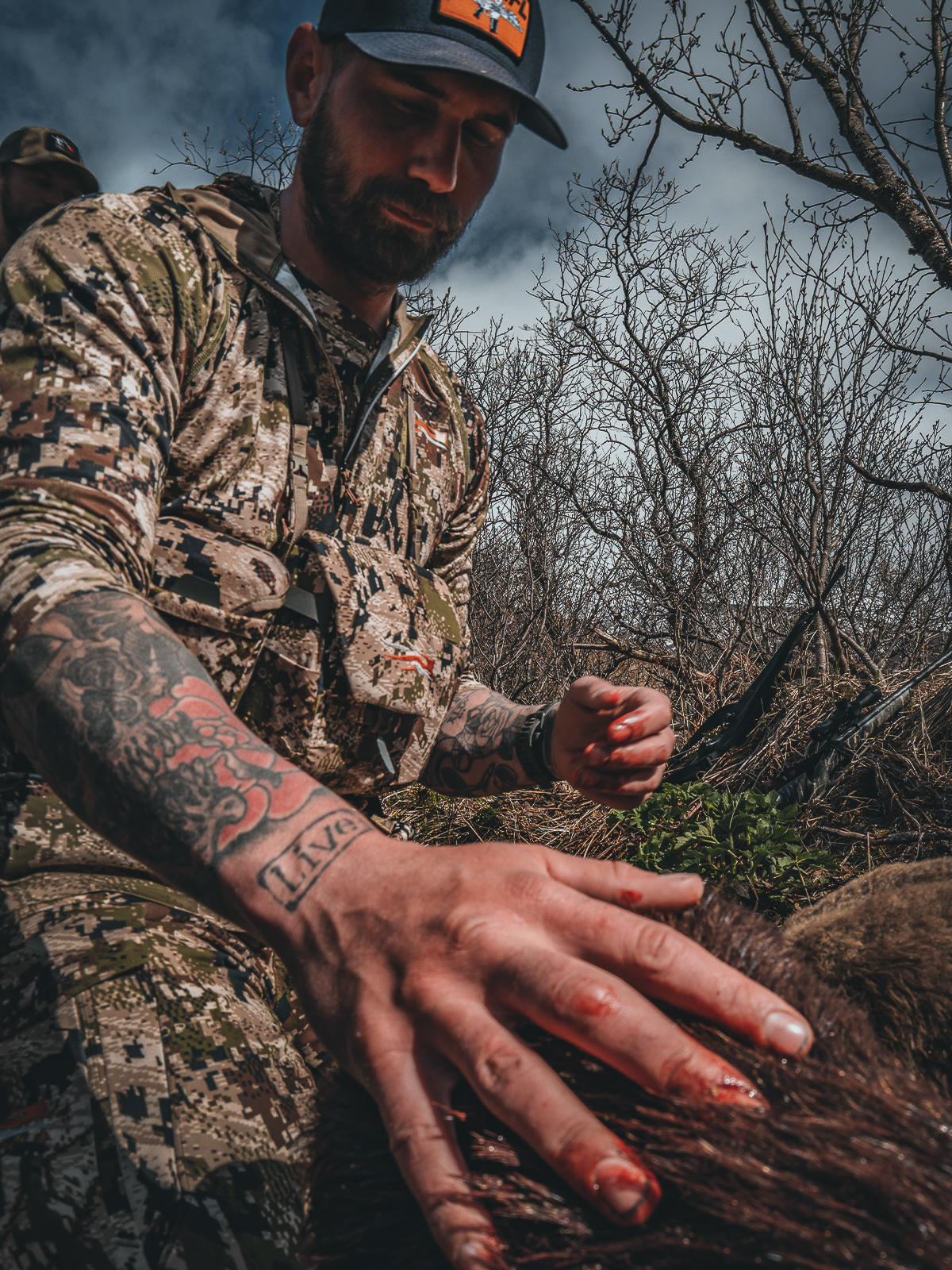
“Then BOOM, we see the bear.”
Although seeing an Alaskan brown bear up close and personal is pretty shocking, there was something else surprising about this one.
“All of us were like, wait a second,” Best says. “That’s not the one we’ve been glassing. Oh, my god. That bear Evan saw has already moved all the way down that valley. He’s fucking 800 yards from us. And another bear is somewhere within 200 to 300 yards.”
“In the time it took us to move like a click and a half, this bear goes like three miles,” Stark says. “And now it’s right in front of us.”
“Then, of course, Cole being the whacko but the awesome guy he is, starts calling this bear in,” Best says.

Kramer begins to moan and growl through cupped hands, making noises that would have the cast of Finding Bigfoot pissing their pants. It works, and the bear starts lumbering toward Kramer’s calls.
“The size of the shoulders walking toward us,” Best says, “We were all like, ‘Whoa.’”
“He got a little bit closer, and a little bit closer, until the distance was like 230 yards,” Hafer says. “He started to move into 180, and then Cole was like, ‘Shoot that bear.’”
And they do.
The massive bear spins, trying to bite the spot where Hafer’s bullet penetrated the hide. It takes two more shots, and he just rolls.
GOOD GEAR — Fuel Your Next Workout With the BRCC Fit Fuel Blend
IT AIN’T OVER
“What we didn’t realize was that the other bear probably got the scent of that bear coming in,” Best says.
Kramer peers up and spots another big bear, and it’s already right on top of them.
“Shoot him!” Kramer hollers.
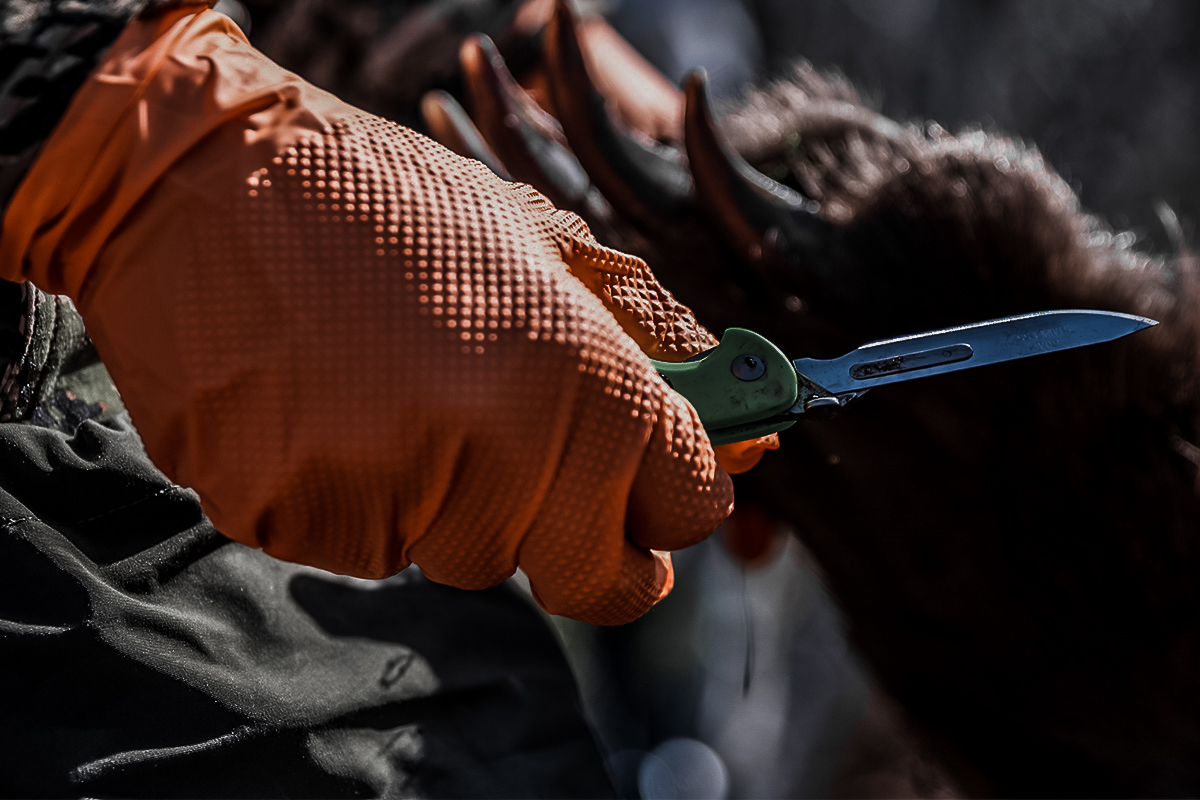
Best moves with well-honed alacrity, spins, and takes a fast shot at the second bear, which runs off into some thick brush. Although Best feels like the shot was good, it’s easy to start second-guessing himself.
“I was so nervous,” Best says. “I plugged that thing. I rolled him, but it was a brown bear. I didn’t necessarily know if I had wounded it or how far it was going to move.”
Stark and Kramer decide to circle beneath the brush where the bear disappeared to try and flush it out so Best can take a final shot.
“I went down there with supreme confidence,” Stark says. “I saw Mat’s shot. There is no way this thing isn’t 100% down.
“We go into this little grassy clearing, and I knew there was a tree right by where I thought the bear went. I look over to my right, and there’s this small creek bed and a huge patch of blood.”
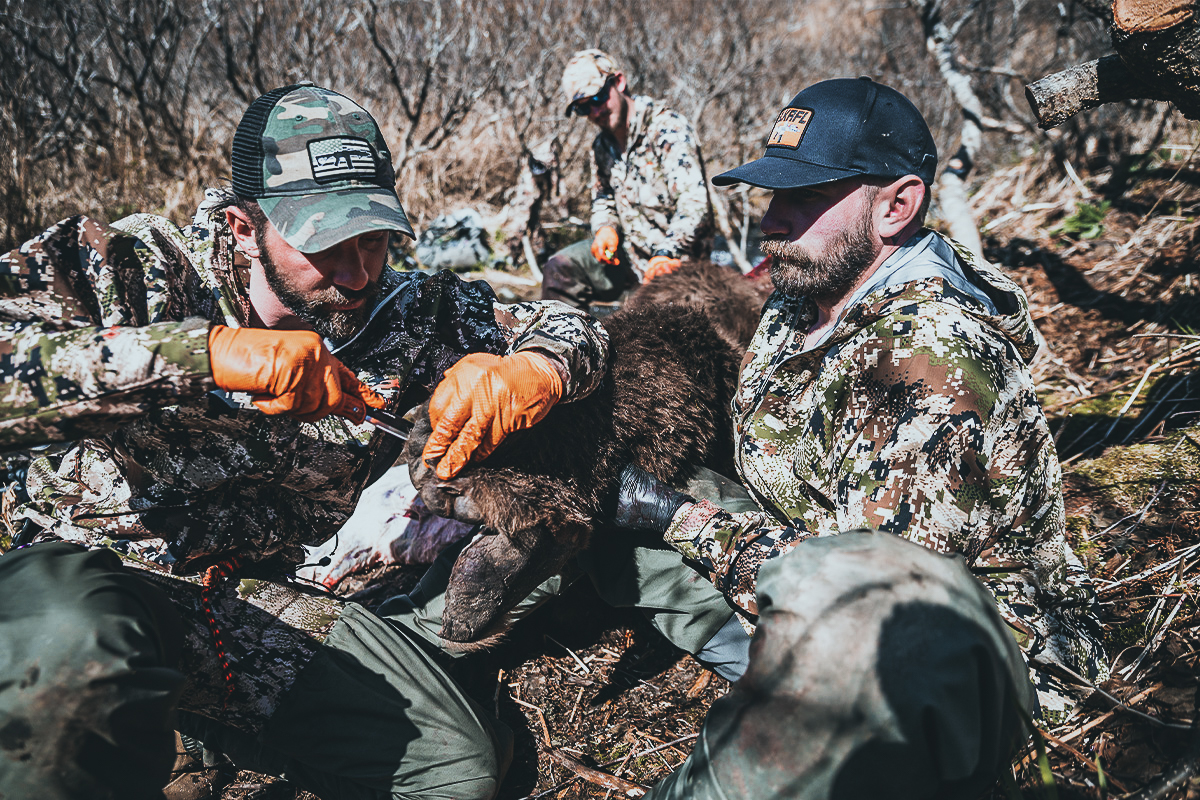
Kramer and Stark laid eyes on the bear lying motionless some 30 yards away. Being close to a potentially injured brown bear can get ugly quickly, so Stark shot the animal one more time to ensure it was dead.
RELATED — Hunting Alaska With the New Silencer Central Banish Backcountry
AN ALASKAN BROWN BEAR DOUBLE DAY
When Hafer and Best hear a whoop from Kramer and Stark below them in the brush, they realize they just scored a double.
“Ride the fucking lightning, bro,” Hafers says as they exchange hugs and fist bumps.
“I’ll take seven days of misfortune for the fucking stars to align like they did because that doesn’t happen,” Best says. “That’s a testament to Cole Kramer as a guide right there.”
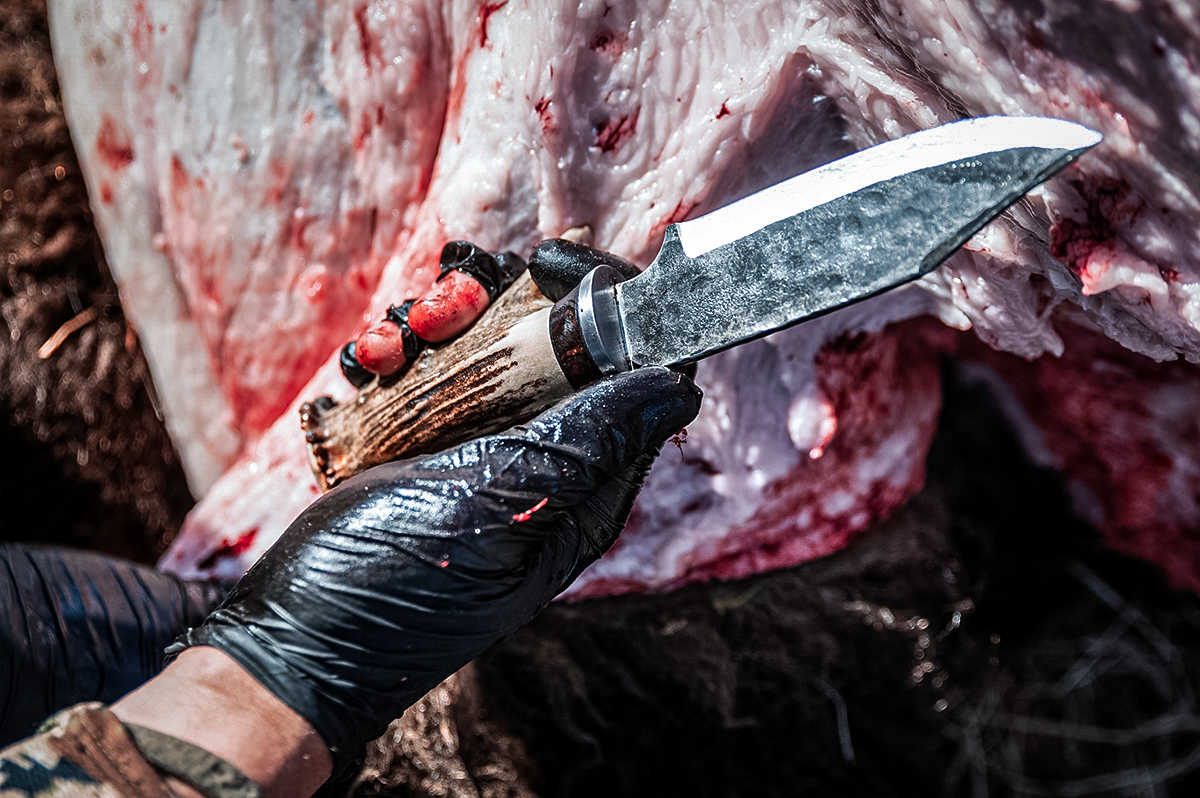
“That was my first time to pull a double, truth be told,” Kramer says.
“It was pretty emotional for me because it fulfilled a lifelong dream. I come from a really blue-collar family, and so does Mat.” Hafer says, getting choked up.
“My grandfather, uncles, and all these guys told me about Alaska and how the pinnacle of adventure is a brown bear hunt,” he adds. “I was a kid listening to stories about hunting from my grandfather and father, so to share that with my business partners, that’s fucking cool.”
After a few moments of celebration, the group approaches the first bear to admire his battle scars.
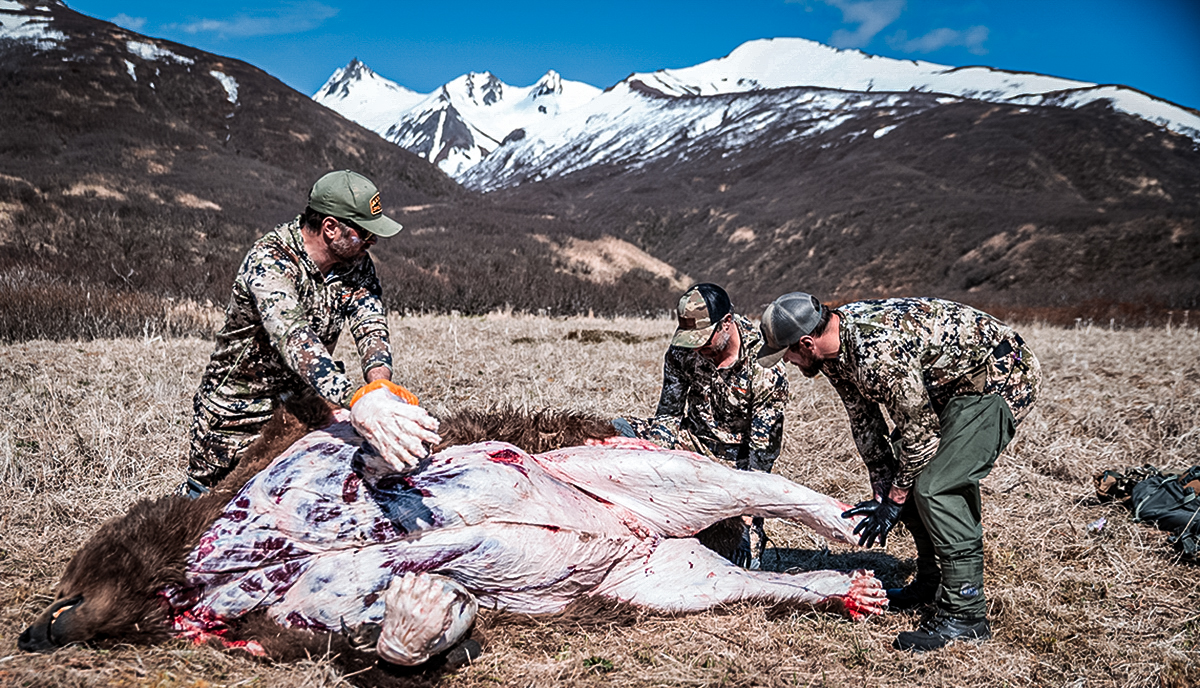
“I’m kind of a gun-toting hippie,” Best admits. “When I harvest animals, I really appreciate what they did for me and my family by feeding us. It’s like the whole circle-of-life vibe.
“It’s a majestic animal. It’s frickin’ beautiful. Walking up and knowing I took its life, I just had a lot of respect. I was very thankful for the experience that bear let me have.”
The guys pass around a Nalgene bottle of fresh Alaskan spring water, each taking a swig.
“To an epic experience with great people,” Hafer says, raising the bottle in a toast to the two bears.
“It’s a celebration of teamwork. One of the perks of this business is being able to go out and do these types of things and then show other people that they can go out and do them with their friends,” Hafer says. “You have to go out and spend time in the field with your buddies, and you have to drink great fucking coffee while you’re doing it.”
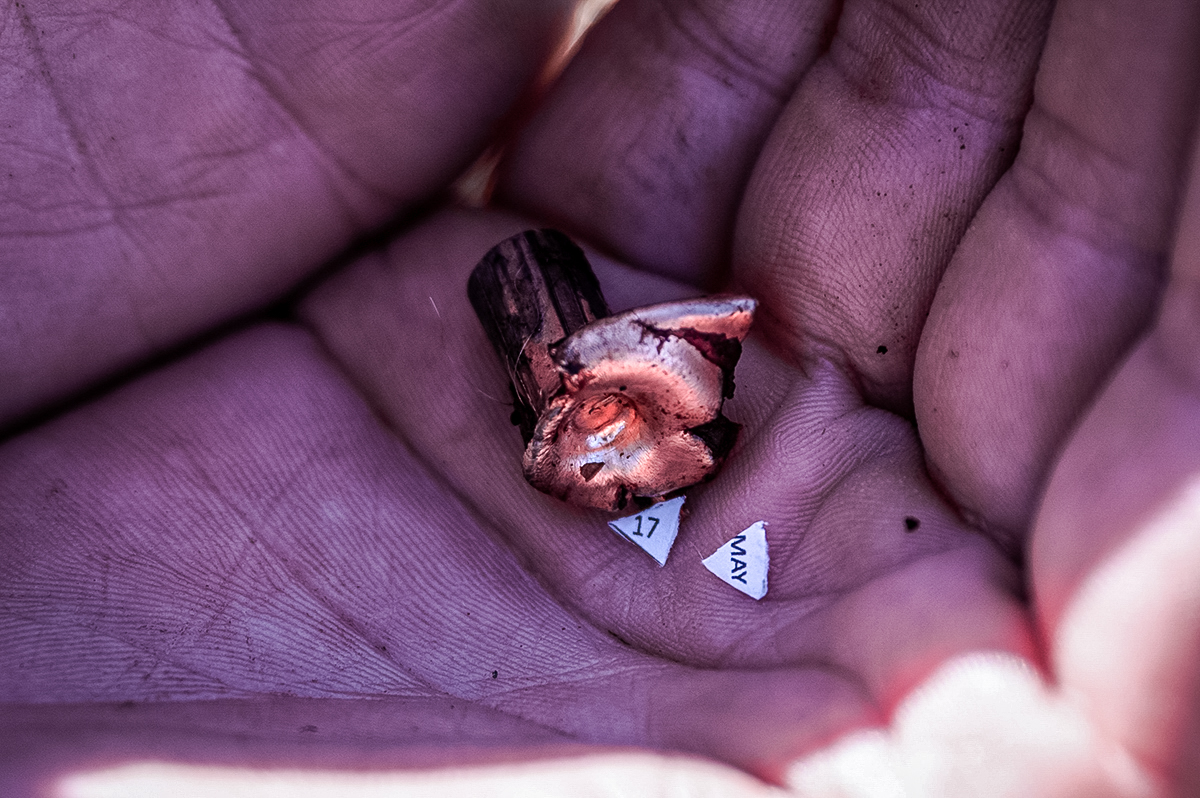
The time for celebration is short because, after the excitement, the real work of the hunt begins.
“When you take the skin and hide off, you’re getting a thick layer of fat on there,” Best says. “They weigh anywhere from 120 to 150 pounds, just the hide. I’m a pretty strong guy, and I’m having to use all my strength to lift up an arm.”
Instead of hauling those hefty hides, on top of all the gear, three miles over rough Alaskan terrain back to camp, Kramer calls in backup.
“The plane is going to come in and help us out here,” Best explains. “All of us were more than willing to pack this out over the miles back to camp, but if you don’t have to — Work smarter, not harder.”
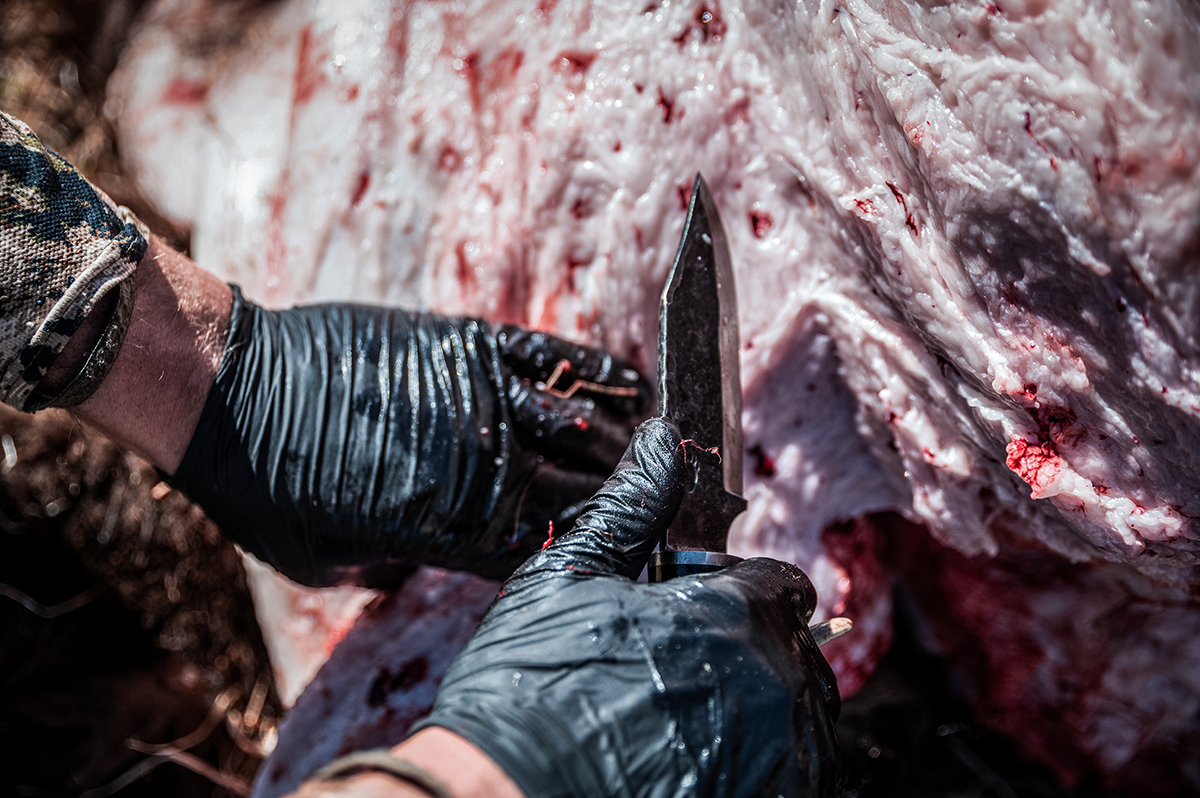
With the hides packed in the Piper Super Cub, the group pulls on their packs and starts the hour-and-a-half hike back to camp with broad smiles.
“We executed on a hunt that you could not duplicate ever in the history of hunting,” Stark says as he hikes along a rocky creek bed. “It turns out the three of us together are very proficient with firearms. I know that comes as a shock.
“It was a good day, definitely the best day of this decade, and I’m glad I get this opportunity to spend it with my friends and make new ones along the way.”
Alaska Bear Hunt Part 7: Alaska’s Targets of Opportunity and Bear Dick Coffee
After the excitement of taking two bears in two minutes and the effort required to break them both down, the guys decide to take a few hours to sleep late and recover.
“We did a 12 km day across varying terrain and were smoked. We thought the next day we would lounge around camp and get a late start,” Hafer says.
However, that late start turns into no start at all, and the group ends up relaxing in camp chairs, surrounded by jaw-dropping Alaskan views. With two of three tags filled, some of the pressure was off.
“Here’s the deal — after I pull a double, I sleep for 8 hours,” Kramer says.

“Here’s the problem — I wanted to be respectful of your sleep, but I wanted coffee more than I wanted to be respectful of your sleep,” Hafer tells him with a smile. “My need for coffee will always override your sleep issues.”
Best takes some time to show off a trophy collected the previous day that didn’t get put on the plane with the meat and pelts, the “trusty bear penis” he has saved in a plastic bag.
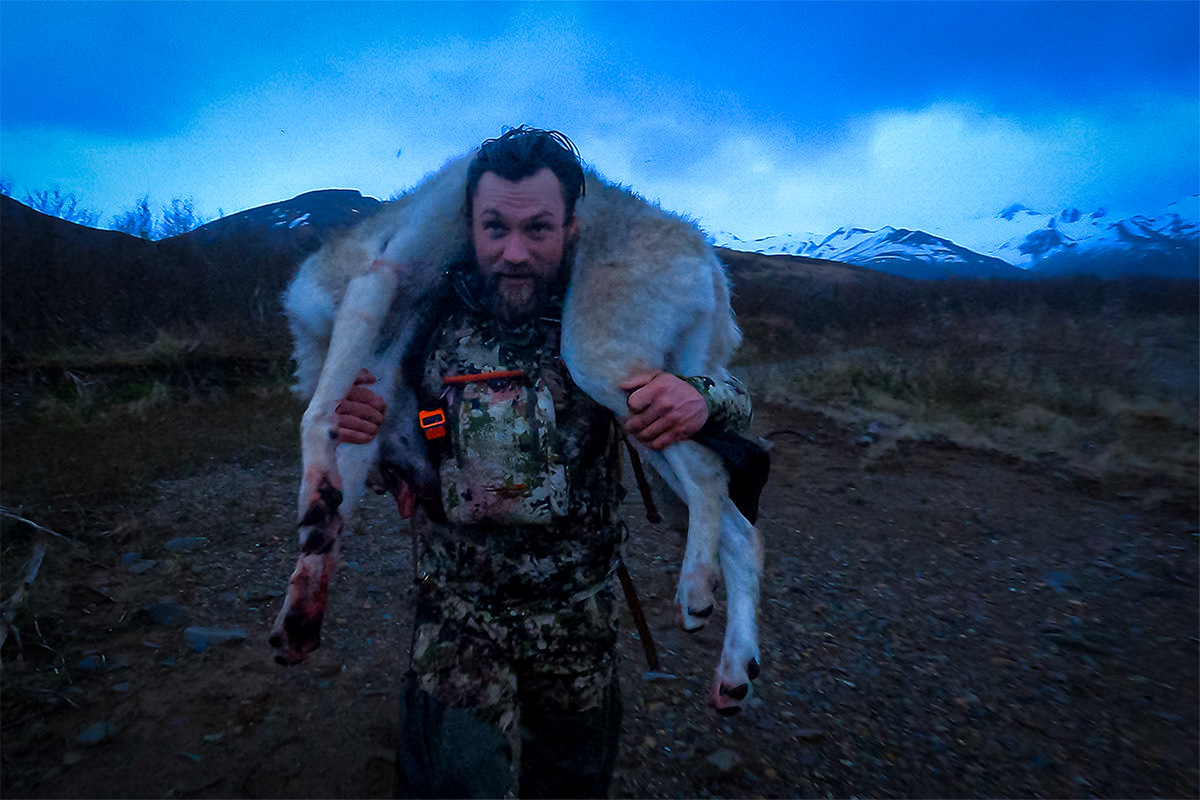
“What you do with this is boil it, get all the meat off it, bleach it if you want to, and then make a stir stick out of it,” Best explains. “When you bring people over to your house and ask them if they want cream and sugar in their coffee, you just stir it with the bear dick.”
In addition to flashing a storage bag full of bear dong, the guys sit around the tent brewing coffee, downing rehydrated Peak Refuel meals from various containers, and generally chilling out. The downtime was also the perfect opportunity to dry their wet gear and funk up the tent.
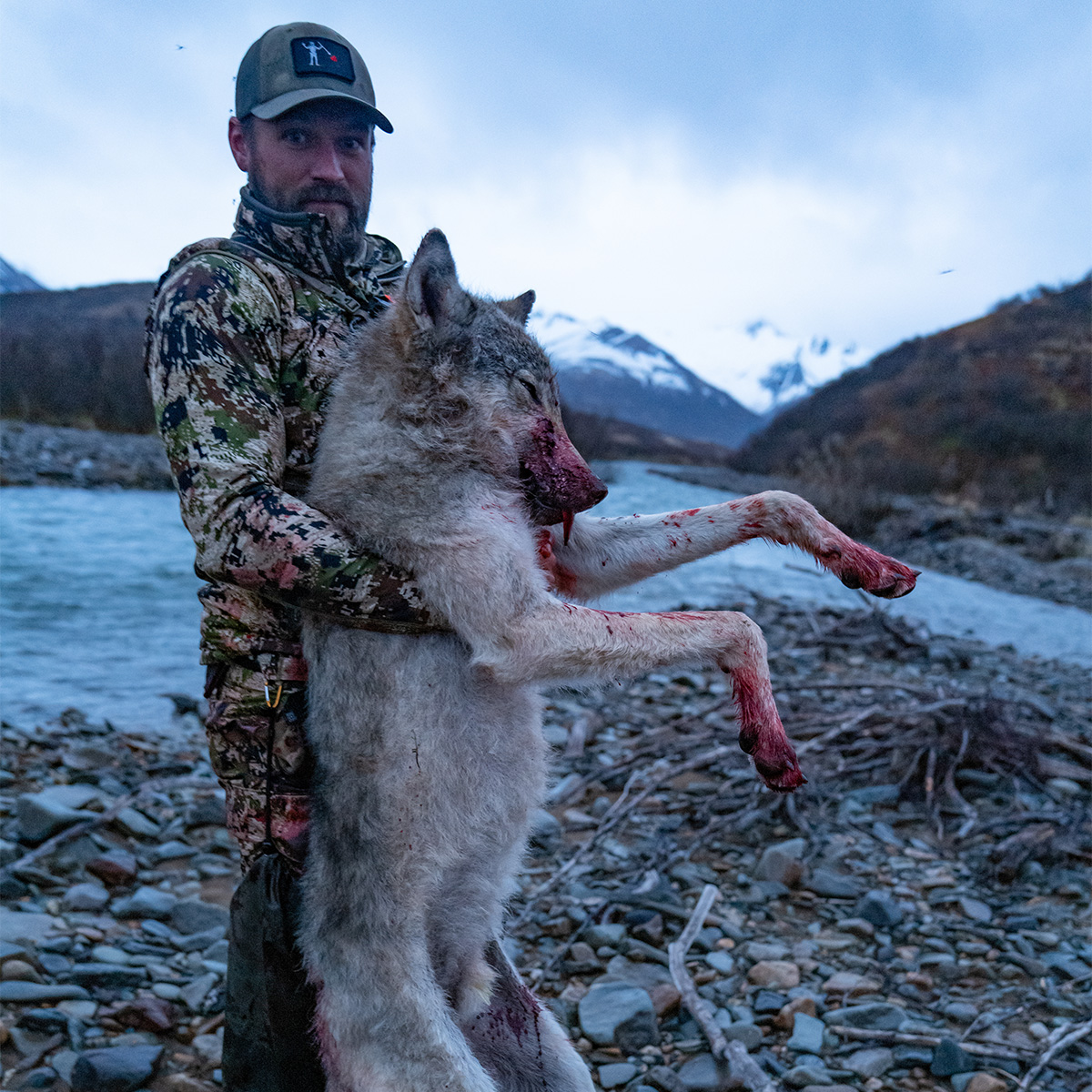
“I don’t know what he did on skinning the bear, but Logan smelled like a rotten fish factory,” Best says. “He was hanging up his gloves right above my cot, and the stench was just permeating.”
BACK TO GLASSING
After their much-needed rest day, everyone is right back to glassing on Kramer’s favorite knoll. After all, Stark still has a bear tag to fill.
“Cole really liked this area because it’s a travel corridor,” Stark says. “He had this instinctual, gut feeling about really big bears moving through there.”
Everybody springs into action when Kramer spots a hefty boar off to their left.
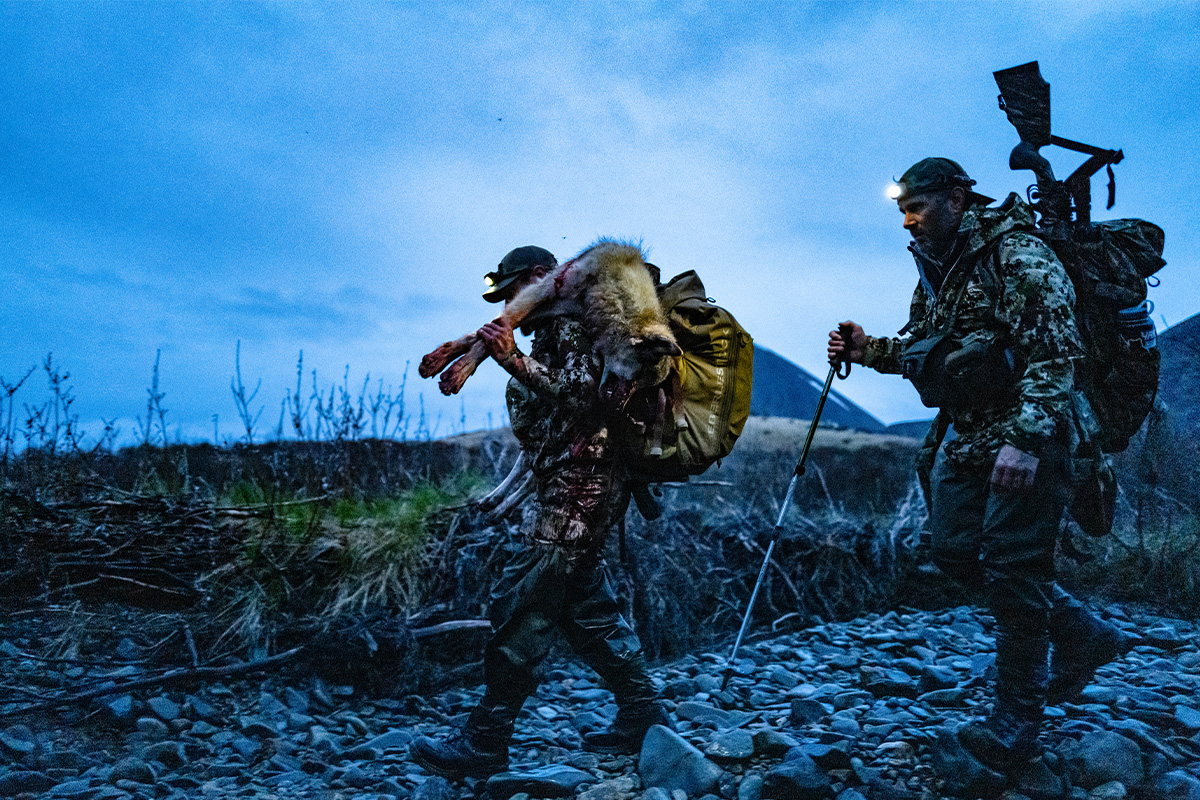
“Again, zero to a hundred,” Stark says. “This time, we had just put water into all of our meals, but a bear was pushing down the center of this travel corridor. Cole said we were just going to jump over this mound, get into position, and see what happens.
“The wind wasn’t great for us, but we got in on the other side of this knoll. It starts raining a little bit, and Cole starts to call.”
Kramer begins to grumble and moan into his cupped hands, growling like a belly full of bad chili, making bear noises no self-respecting boar should be able to resist.
But the bear parks it at 600 yards.
“This big boy, he just sits down. He literally sits down like a dog,” Stark says. “Cole is calling, and he’s calling, and he’s calling, and the bear just sits there.”
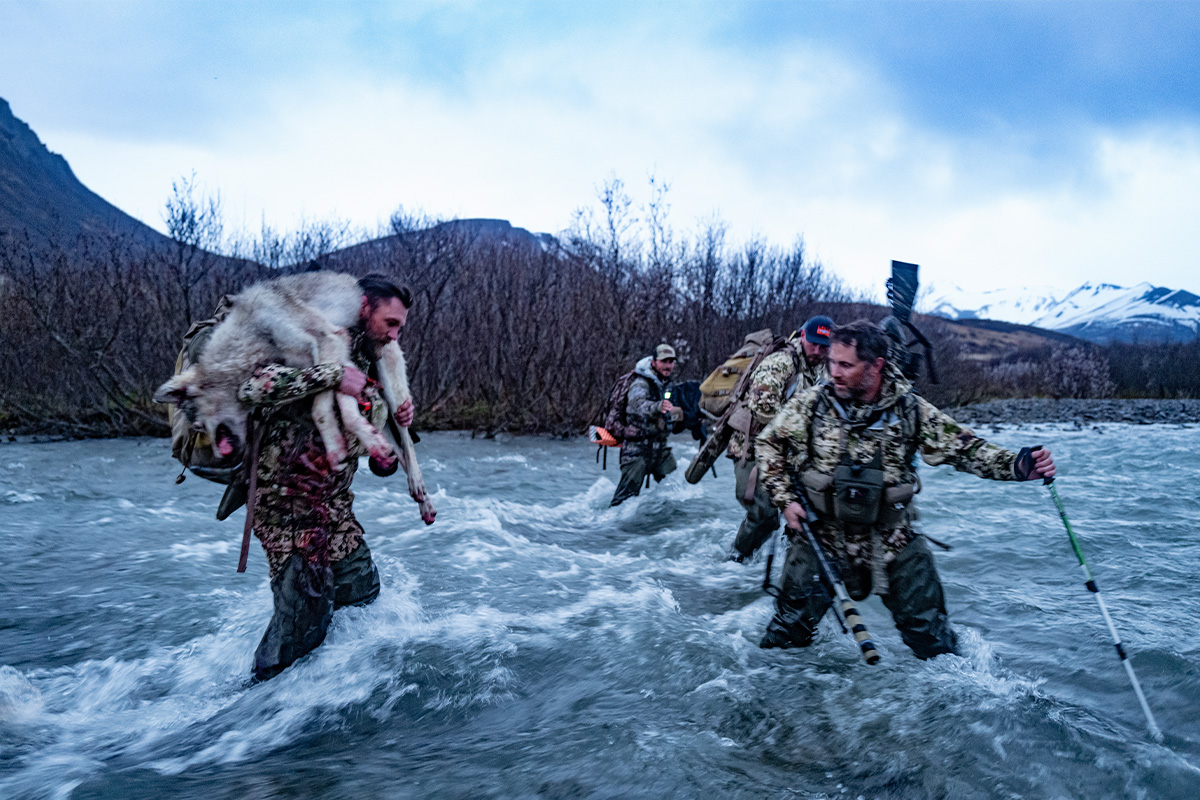
After squatting there for about a half hour, the bear gets up, turns around, and makes a beeline in the other direction.
“That dude is on a mission,” Kramer says, watching the bear through the spotting scope.
“It was a super old bear, a really big bear,” Stark says. “He just never got close enough for us to get a good shot on him.”
OLD HABITS DIE HARD
Although Stark barely misses an opportunity to punch his tag, the day’s excitement is far from over.
After the bear hightails it out of view, a pack of wolves moves through the valley chasing down a cow moose.
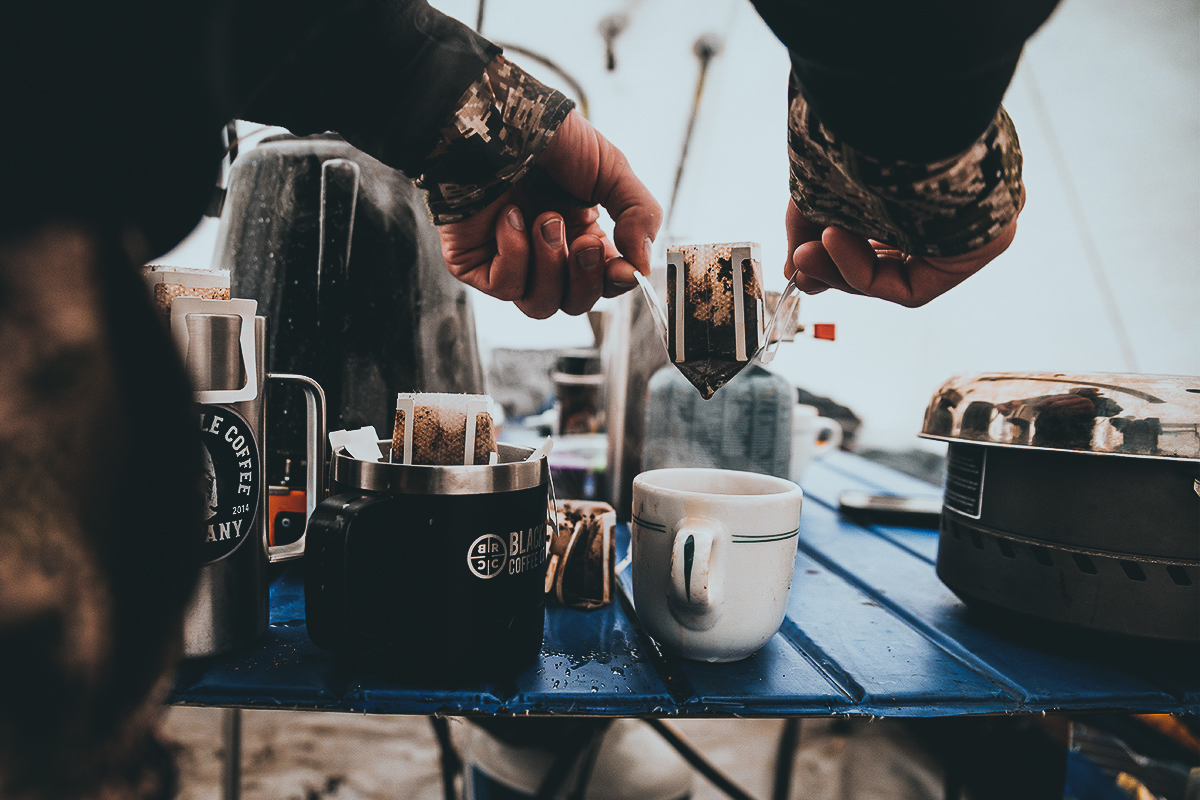
“We’re watching these wolves pursue this moose, and they are close. They’re on it,” Hafer says. “We were thinking we were going to watch these wolves kill this moose right below us.”
The spectacle presented a target of opportunity. With the moose at 500 yards, Kramer dials in the rangefinder, and Stark, a retired sniper, drops the bounding wolf with a single, gorgeous shot.
“Shooting wolves is a rare thing. It’s pretty awesome. You guys made a good shot,” Kramer says.
“My compliments to Logan. He shot that wolf right in the face,” Hafer says. “Old habits die hard, I guess. He did a great job on that. It was amazing.”
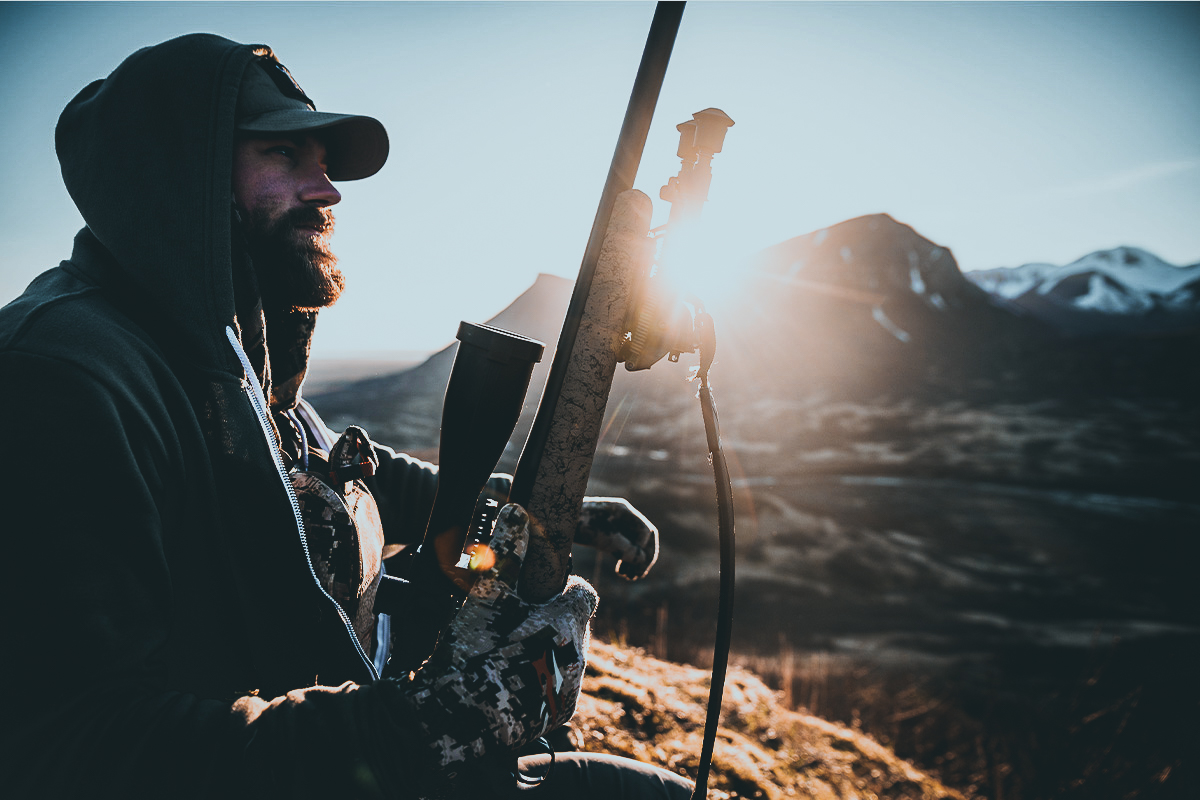
Stark throws the wolf over his shoulders and hauls it back to camp in a fireman’s carry through a rushing river.
“We didn’t get home until 1 in the morning. It was awesome,” Hafer says. “I wanted this to lead to adventure. I wanted this to be so successful that it would fund a lifetime of adventure.
“So far, so good.”
Alaska Bear Hunt Part 8: Logan Stark Goes Solo
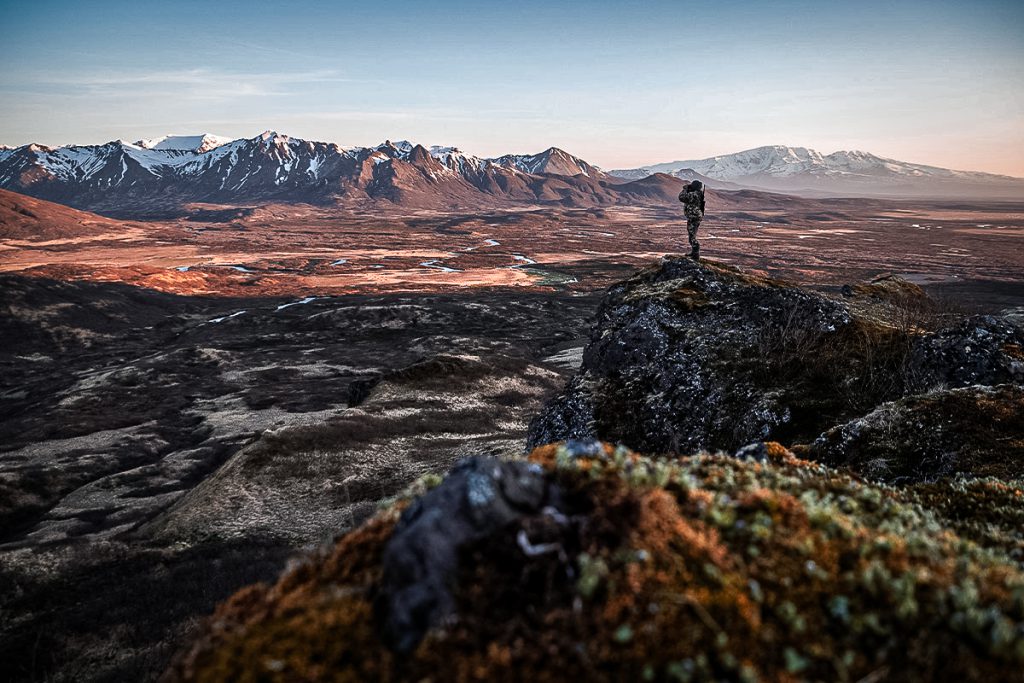
After basking in the glory of two epic bear kills, topped off with a wolf shot on the run, the BRCC hunting partners sit around the tent back at base camp, joking about Stark picking up fleas and mange from hauling his wolf back to camp.
They all raise their coffee mugs in a toast:
“To Sir Logan the Wolf Slayer.”
“That wolf was pretty legit. I’m not going to lie,” Best says. “It might have been too legit to quit.”
After 10 days in the Alaskan wilderness, Hafer and Best decide to head back to civilization, leaving Stark to finish the hunt and hopefully fill his bear tag.
“I was feeling a little bit wonky,” Hafer explains. “Come to find out, I got Lyme disease. It was from a tick [when] I was turkey hunting in Missouri. I decided to head back to work, and I’m glad I did, because I had to start antibiotics.
“Mat and I agreed that we had fulfilled our objective, which was to kill bears and have an epic experience. We’ve done that.
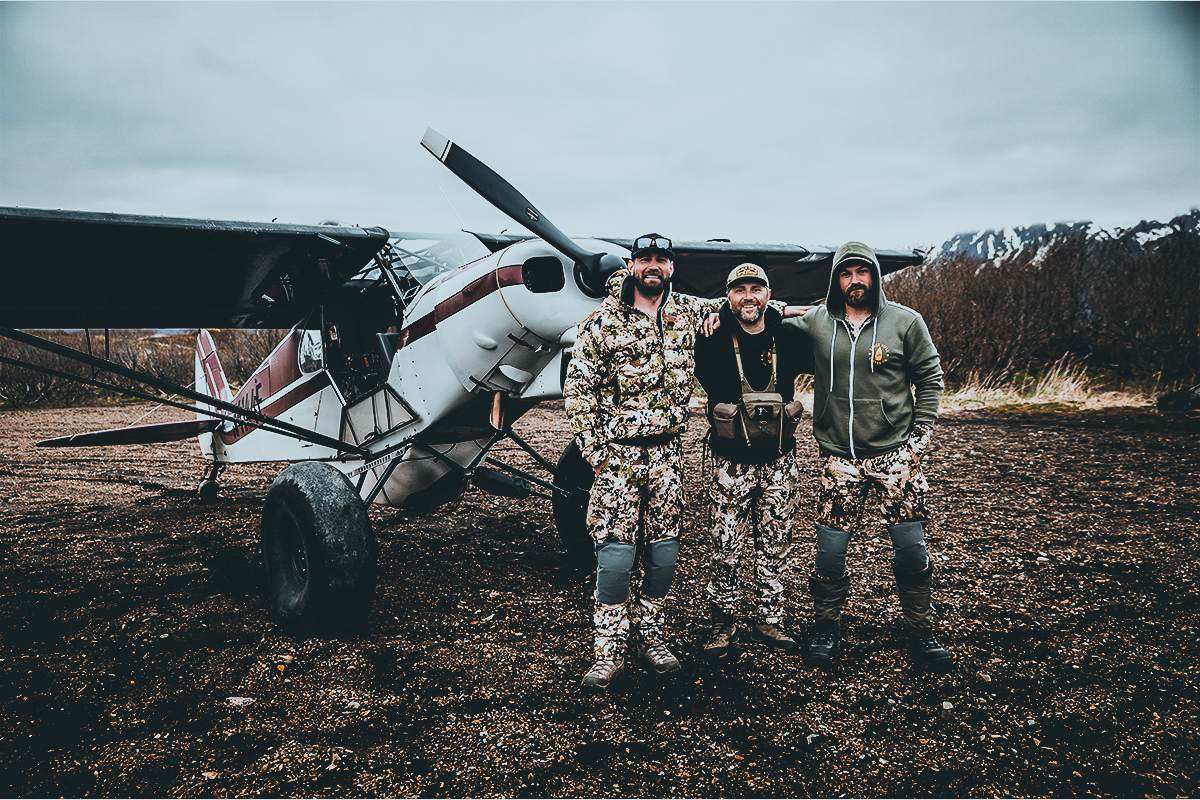
“It was the right decision all the way,” Hafer adds. “If they had to carry me out, that would not have been good for me. I would not have been okay with that.”
“We’re going to go home and get some shit done,” Best says. “Roast great fucking coffee, make great fucking content, and inspire people to do epic shit.”
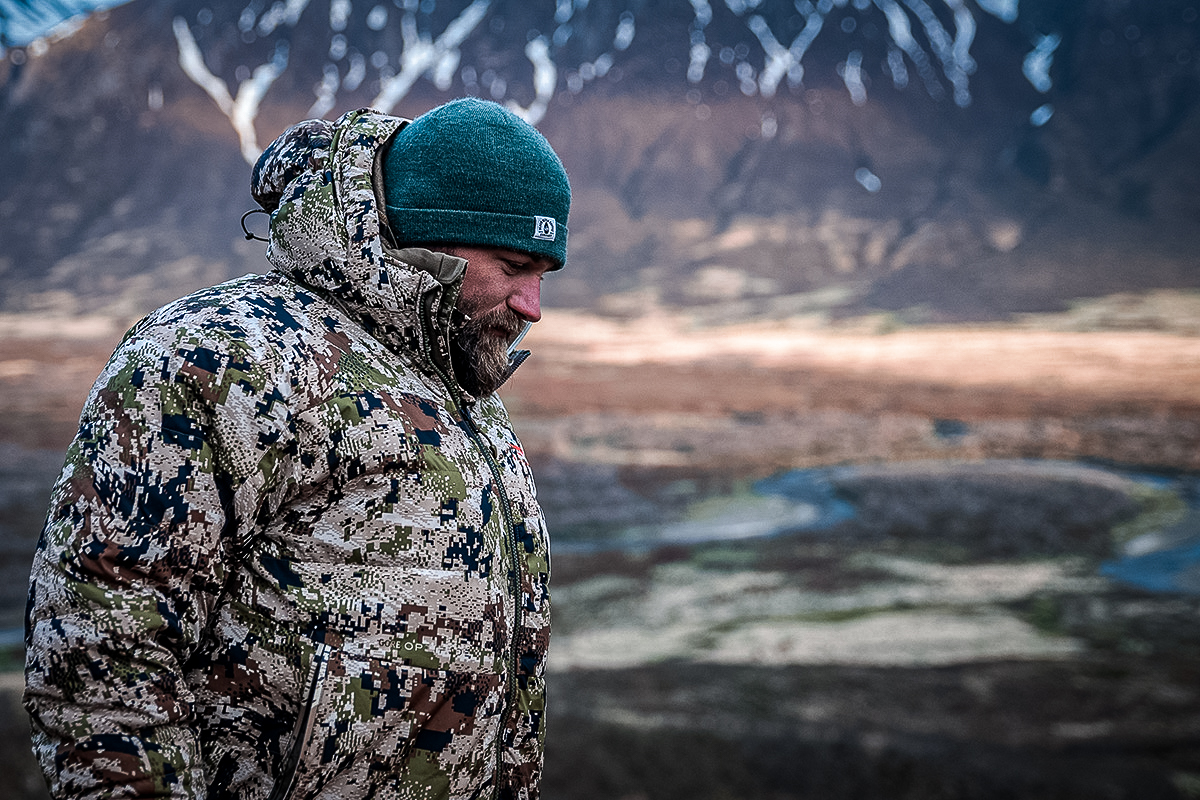
The one-passenger bush plane (aka the dune buggy with wings) swoops in to pick up Hafer first, then Best and all of their gear, leaving Stark alone with the two guides and the cameraman, Trevor Thompson.
“I don’t feel bad leaving Logan whatsoever,” Best says. “Logan really likes that kind of thing, and it probably provided a better experience for him to be alone and be on his own journey.”
When the retired sniper made a deadly headshot on a running wolf as it was chasing down a cow moose, Stark demonstrated he doesn’t need any backup, and he’s determined to fill his tag before time runs out.
“The weight of the business is absolutely very heavy,” Stark says. “Evan and Mat, they accomplished the mission. I’ve got Trevor and Cole. It will be fine.
“It turned out to be a blessing in disguise because the way you hunt with four people versus six people is completely different. I feel like I got this whole other unique experience without them.”
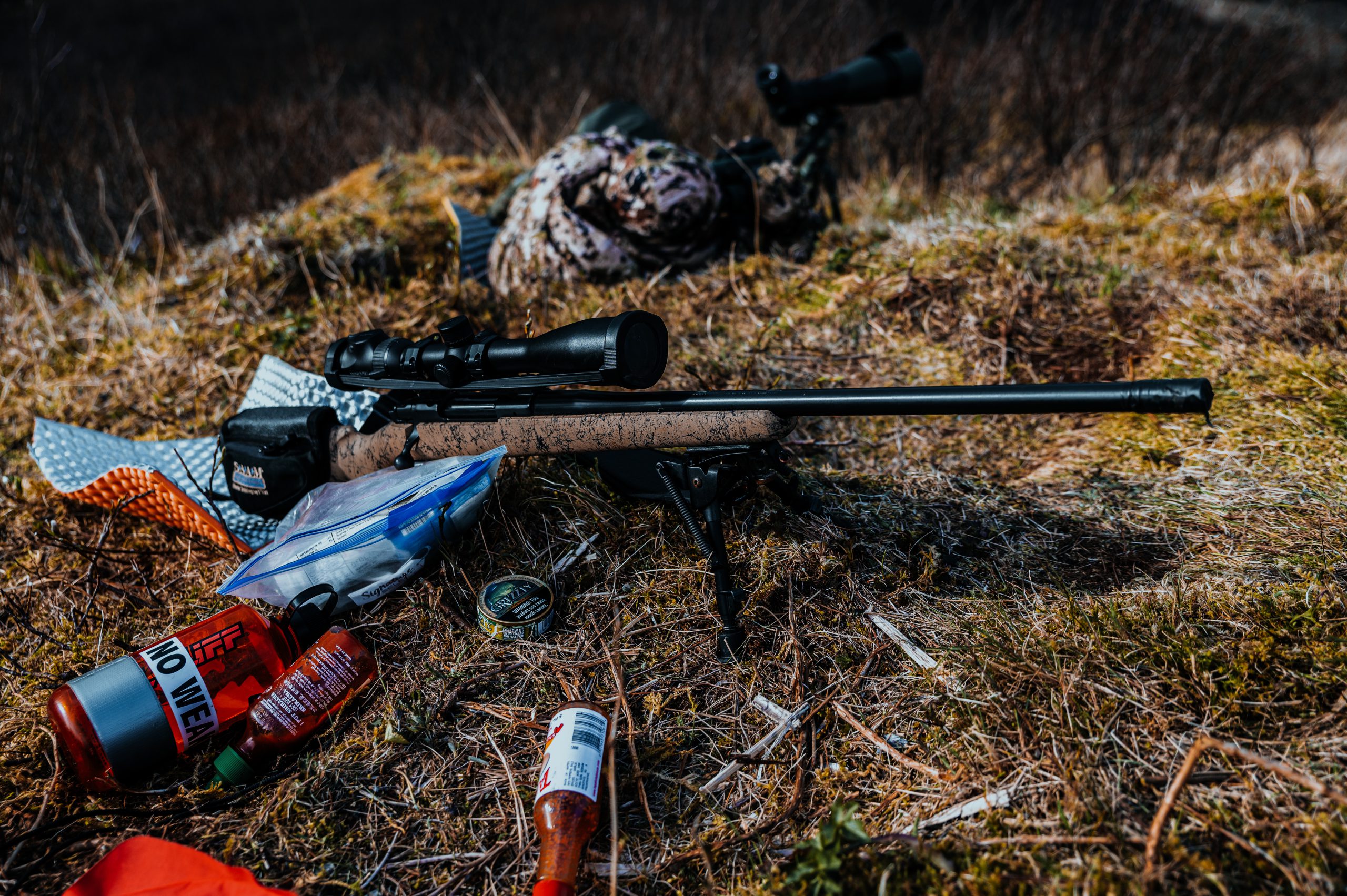
With the smaller hunting party, the group is more mobile and able to move farther away from camp, which is good because the days left for Stark to fill his bear tag are rapidly dwindling.
“Let’s go,” Starks says with his fingers crossed as the remaining members of the party set out from camp to climb one of the tallest peaks in the area.
“I think this is worth it. Look at this view,” Stark says as they reach the top. Nearly breathless, he takes out his phone to grab a photo.
Stark brews coffee on a crude camp stove with the snowcapped Alaskan mountains spreading out in the backdrop as the group watches foxes, moose, caribou, and a bald eagle move through the valley below them.
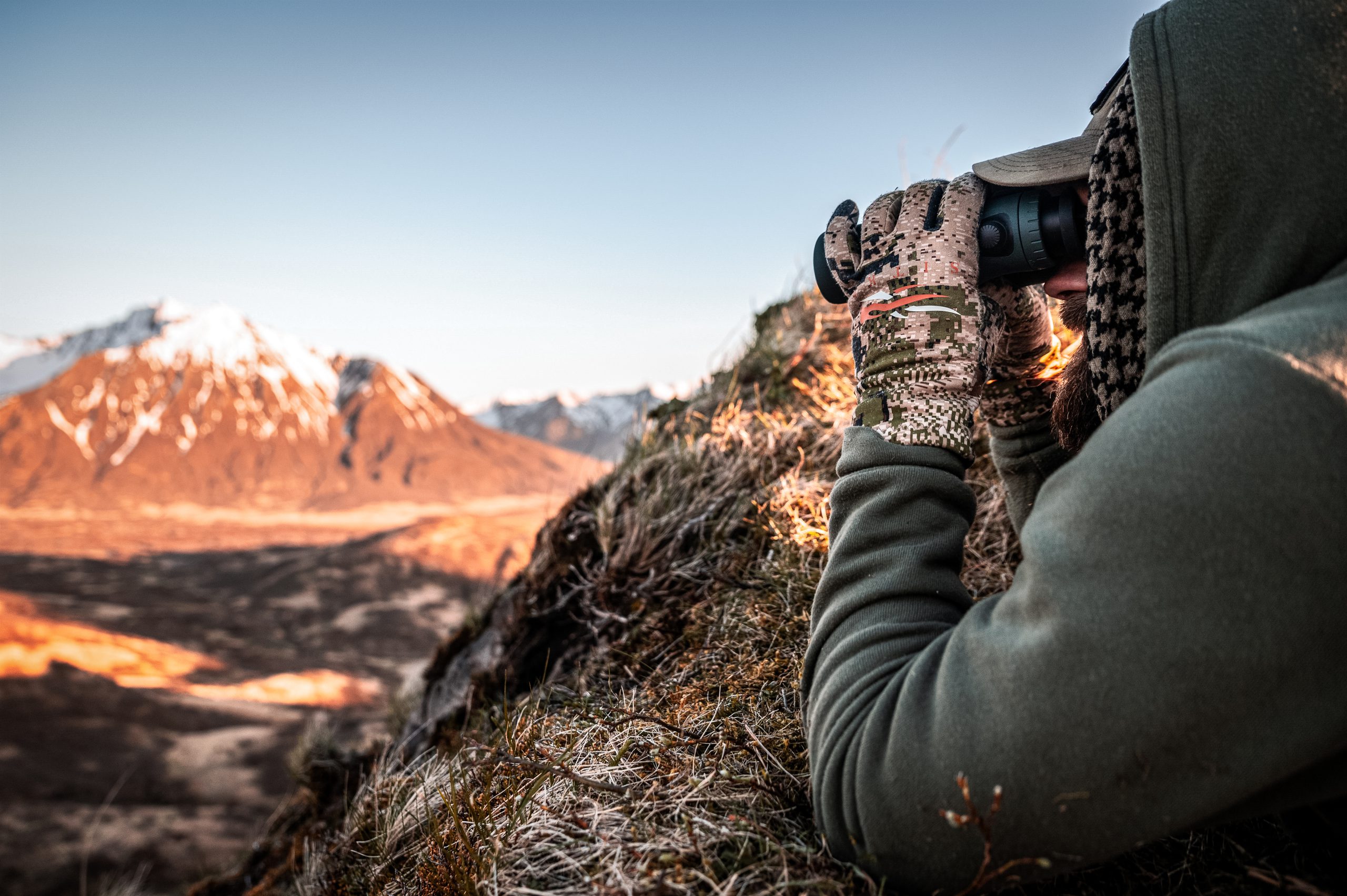
“I’ve got a nice-looking bear way across a couple of valleys a couple of miles away,” Kramer says, looking through his binos. “We’re just kind of overlooking our little valley here, enjoying this beautiful scenery, waiting for Bernard or one of his close friends to come out.”
With only 48 hours left to get it done, Stark is definitely feeling the pressure.
“As anyone who’s been on a sports team or in the military knows, you go through this process where you’re training, you’re learning, and someone else is in line in front of you,” Stark says. “Then, suddenly, you’re up to bat and it’s time for you to be that guy.
“There’s a little bit of a shift in pressure there. I like that pressure. You don’t have follow-up shots in your back pocket. It’s all on you.”
Alaska Bear Hunt Part 9: Last Minute Blonde Bombshell
The Alaska bear season is winding down fast, and Stark’s tag is the only one unfilled. With Hafer and Best returning home, Stark is left alone with guides Kramer and Wilkes to finish the job.
Although the group heads out on Day 13 with high hopes, with 50 mph winds, it ends up being a slow day for spotting bears.
“I would be lying if I said there weren’t moments I wasn’t sure it was going to happen,” Stark says. “It looked like the well had dried up, and there weren’t a lot of opportunities anymore.”
While Day 13 passes without any solid bear hunting opportunities, Stark uses the alone time to pay tribute to his grandfather.
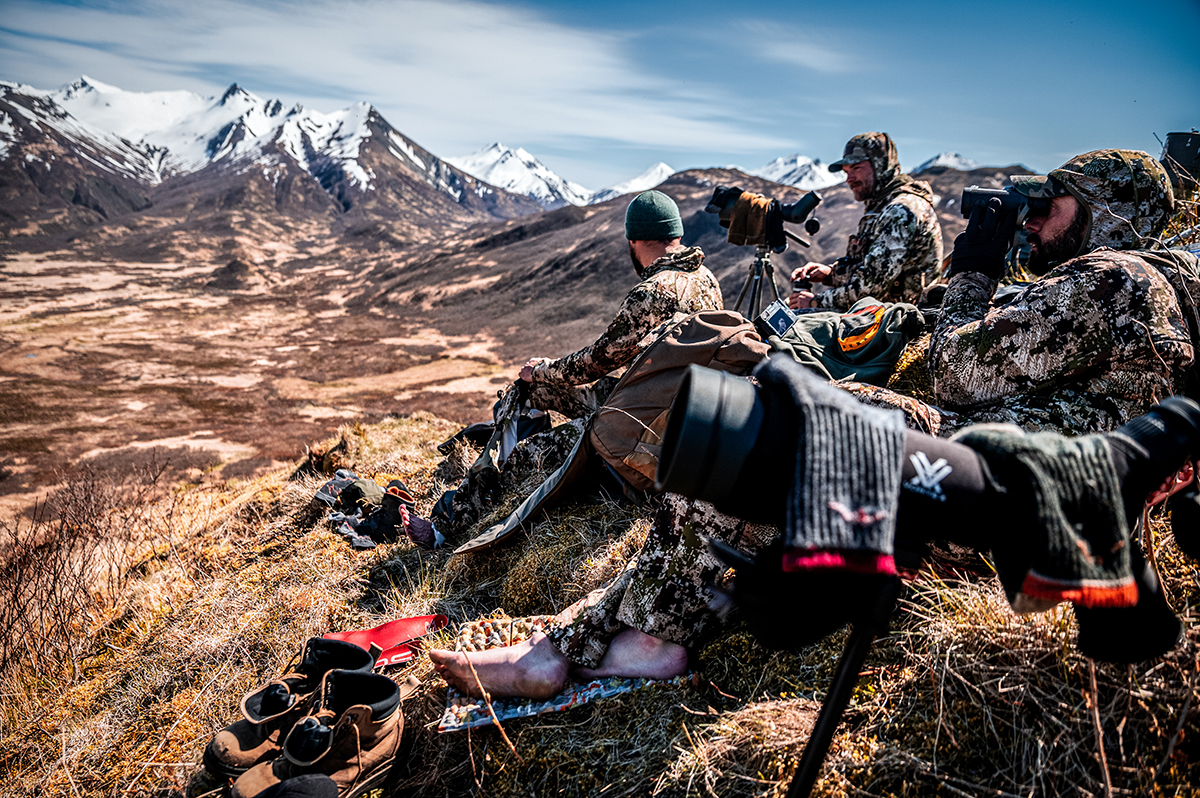
“My grandfather was the reason that I’m into firearms,” Stark says. “A lot of who I am is because of this guy.
“He always wanted to go to Alaska. We always talked about it, but it just didn’t happen. He passed away in January 2020. I was right next to him when he took his last breath.
“There was this collective, cohesive knowledge that I had been prepping to go on this trip to Alaska, the big trip to the place he didn’t get to go.
“It was so glaringly obvious, ‘Take him with you up there.’”
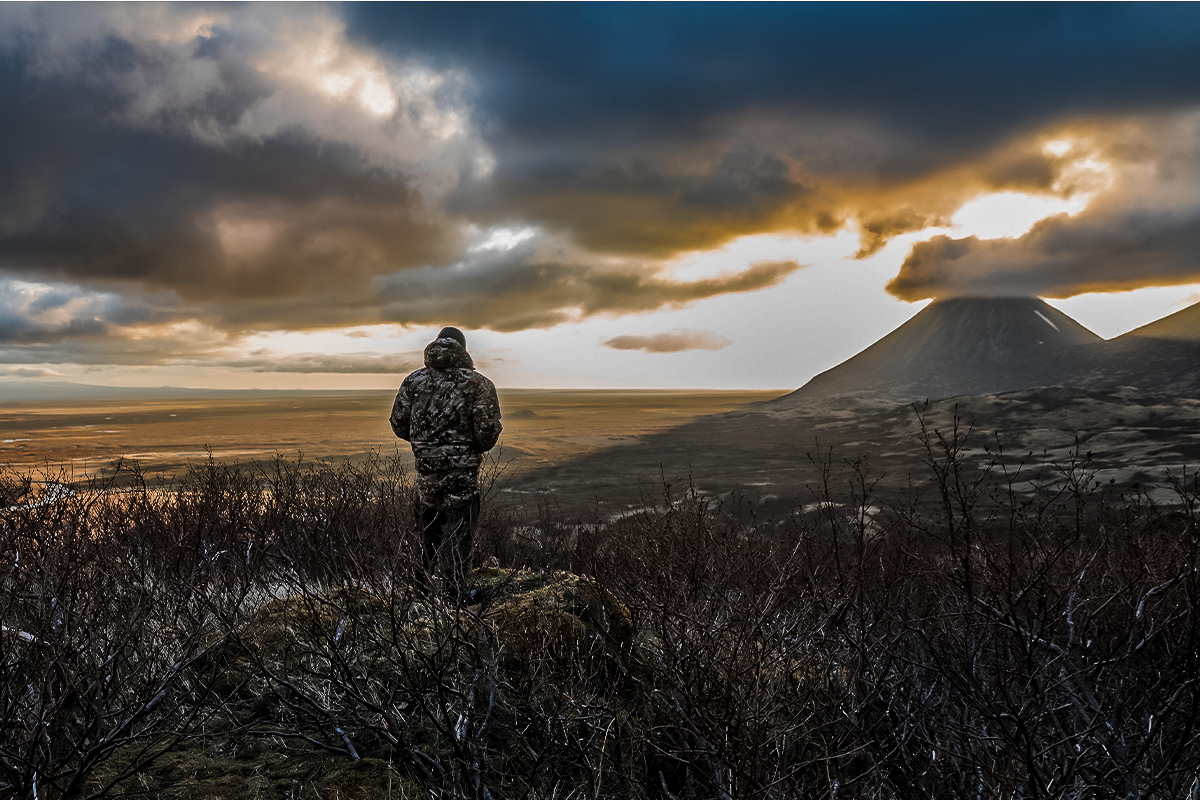
Stark had carried a tiny plastic baggie containing a portion of his grandfather’s ashes through the entire Alaska brown bear hunt.
“I knew I wanted to find a worthwhile spot to sprinkle his ashes,” Stark explains. “You just kind of know when the time is right.”
As the sun sets and the sky explodes in stunning colors, Stark opens the bag and scatters his grandfather’s remains, the ashes floating away on the evening breeze.
“The Alaska sunsets are something to behold. It’s a different type of beauty,” Stark says. “That was the best sunset that I’ve ever seen in my whole life.”
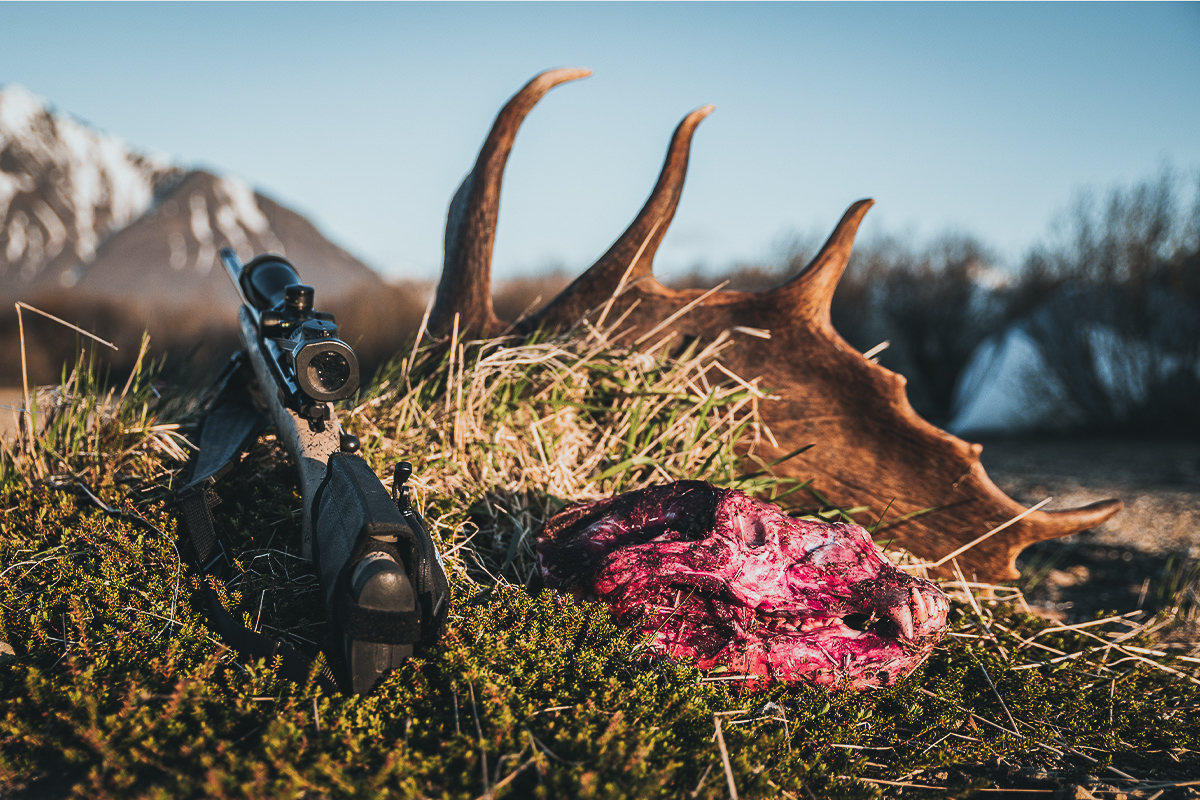
The crew returns to camp with only 48 hours left to get things done.
“No pressure,” Stark says. “But I don’t think this is the last chapter in the Alaska story, so we’ll see what comes next.”
Day 14 sees the sunrise on another blustery Alaskan day, with the wind still cruising at 50 mph.
The group heads out early, hoping to get Stark on a bear. Unfortunately, by the end of the day, Stark has nothing to show for the effort besides a fresh moose shed.
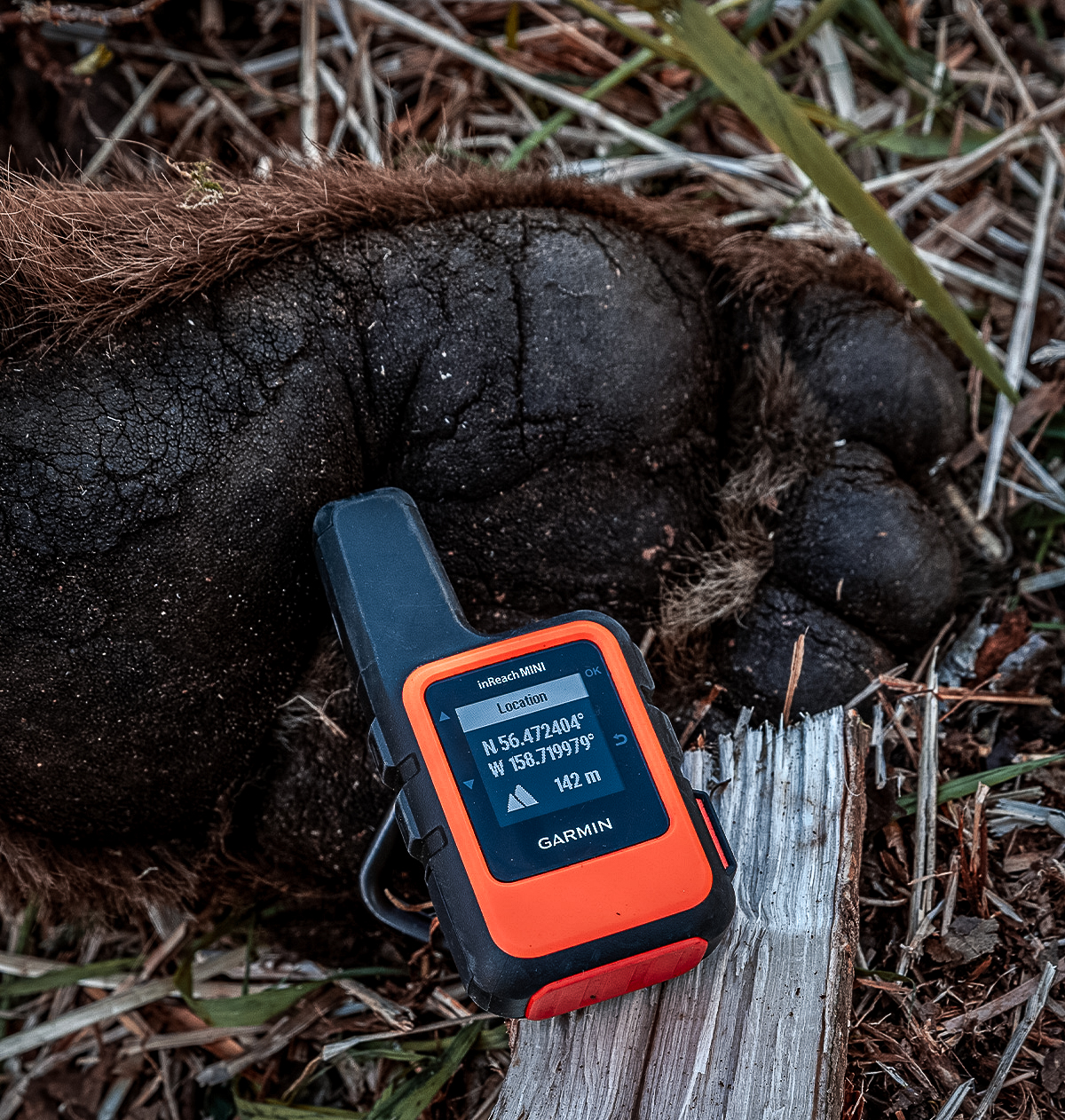
“It’s the second to last day, and there wasn’t too much happening,” Stark says. “Towards the end of the day, we saw seven bears total. Then we saw this boar and sow way up in the snow line, and they were all bow chicka wow wow.
“We have a tentative plan. If we don’t see anything first thing in the morning, we’ll hike up and check the carcasses first to see if there’s anything there. Then we’re going to skirt the ridgeline. There’s a shooting position across from where these two are denned up. We’re going to see if we can get a shot.”
Although it’s a solid plan, it all goes to shit the following morning as they watch the two lovers scurrying down the ridge away from them. And with less than 12 hours left in the season, Stark’s nerves are a little on edge.
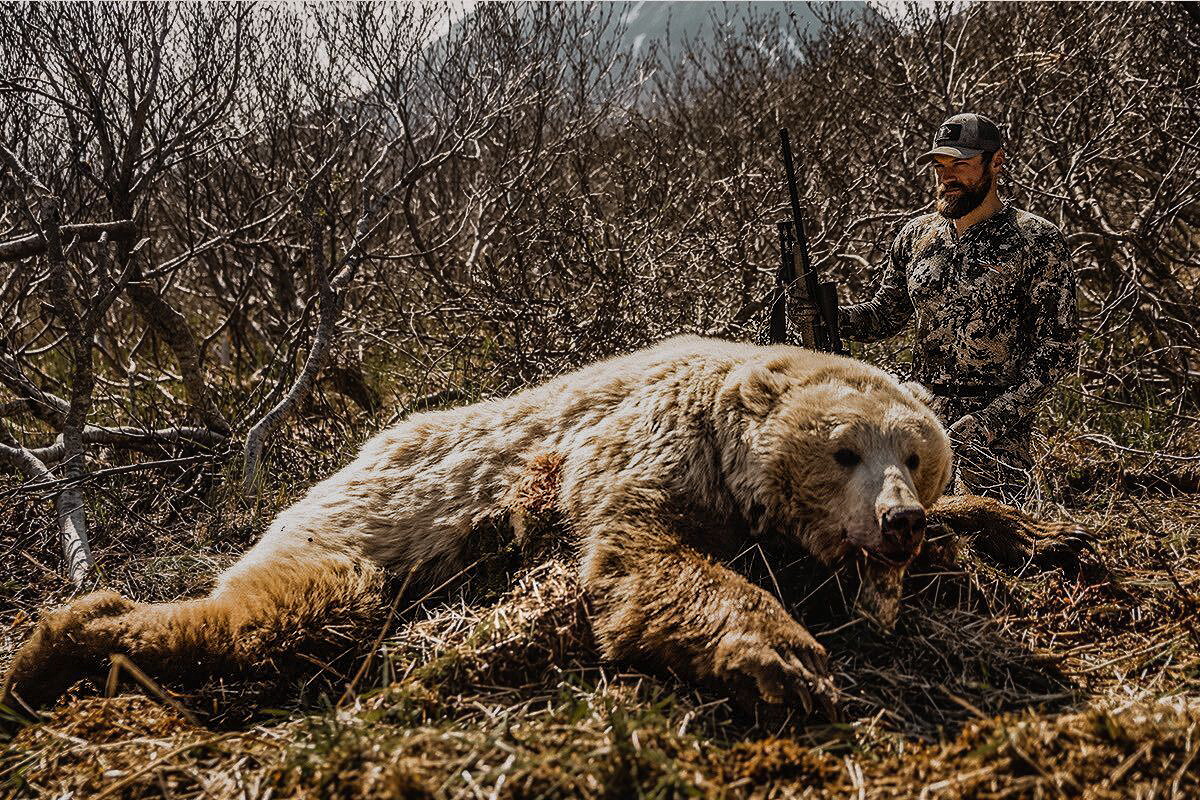
“We’re looking at the landscape, and there’s nothing,” Stark says. “I started to think maybe it wasn’t meant to be. Maybe bringing grandpa up here was the purpose.”
And then, as a gorgeous double rainbow makes a bridge across the valley, Kramer spots a beautiful blonde bear out of nowhere. With only a couple of hours left to seal the deal, the group moves on the blonde bombshell, closing the distance as fast as possible.
“The movement couldn’t have been any better,” Stark says. “Spirit Bear ended up coming down, and as we were staying with the wind, it moved perfectly. Cole didn’t even have to call to it. I could just barely see the top of the back coming through.”
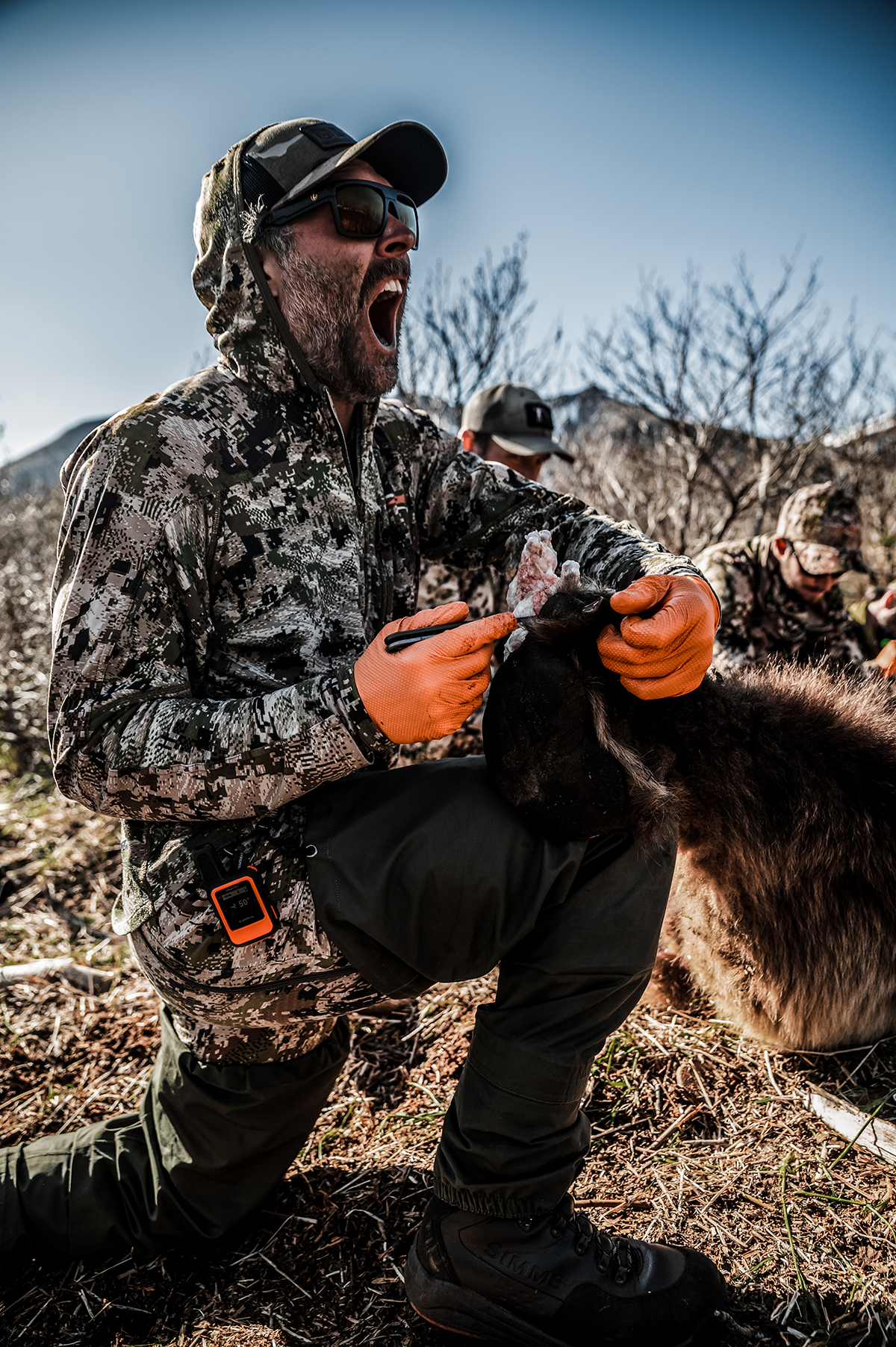
With mere hours left in the season, Stark made the shot at 100 yards, and the injured honey-colored bear moved off into some thick alders.
“It just seemed to happen so fast,” Stark says. “I was confident in my shot, but that’s not the direction your brain goes when you have to go search in very dense alders immediately after.”
Stark puts one more round in the bear, just to be sure.
“He’s down,” Kramer shouts.
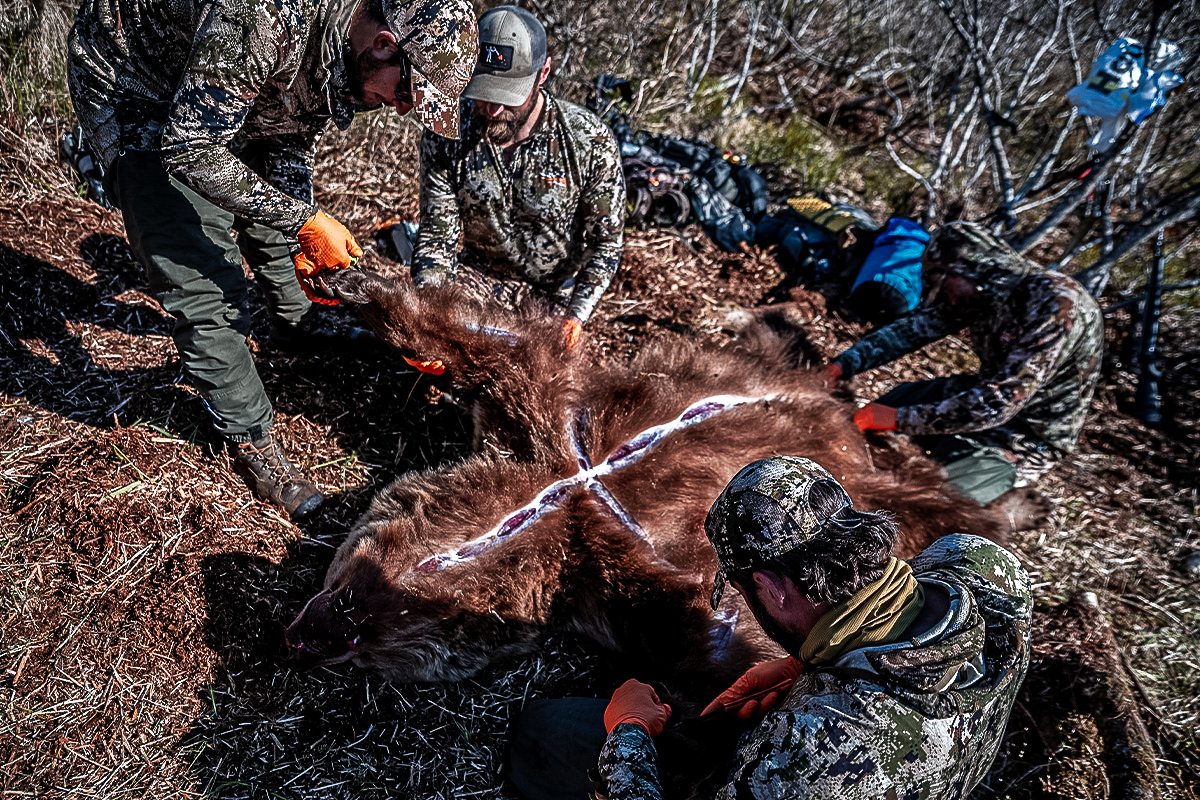
“It felt like you were at the end of a structured chapter in your life,” Stark explains. “Not that I thought my grandpa was there necessarily. It felt like everything was there. That’s why hunting is so special and why I love doing it. You get these moments that will sculpt the man you will be for the rest of your life.
“I’ve got to throw it out to Evan for putting this together. I feel like when you go hunting, the universe always speaks to you. It makes you think about life, death, and how you live — something we all need more often.
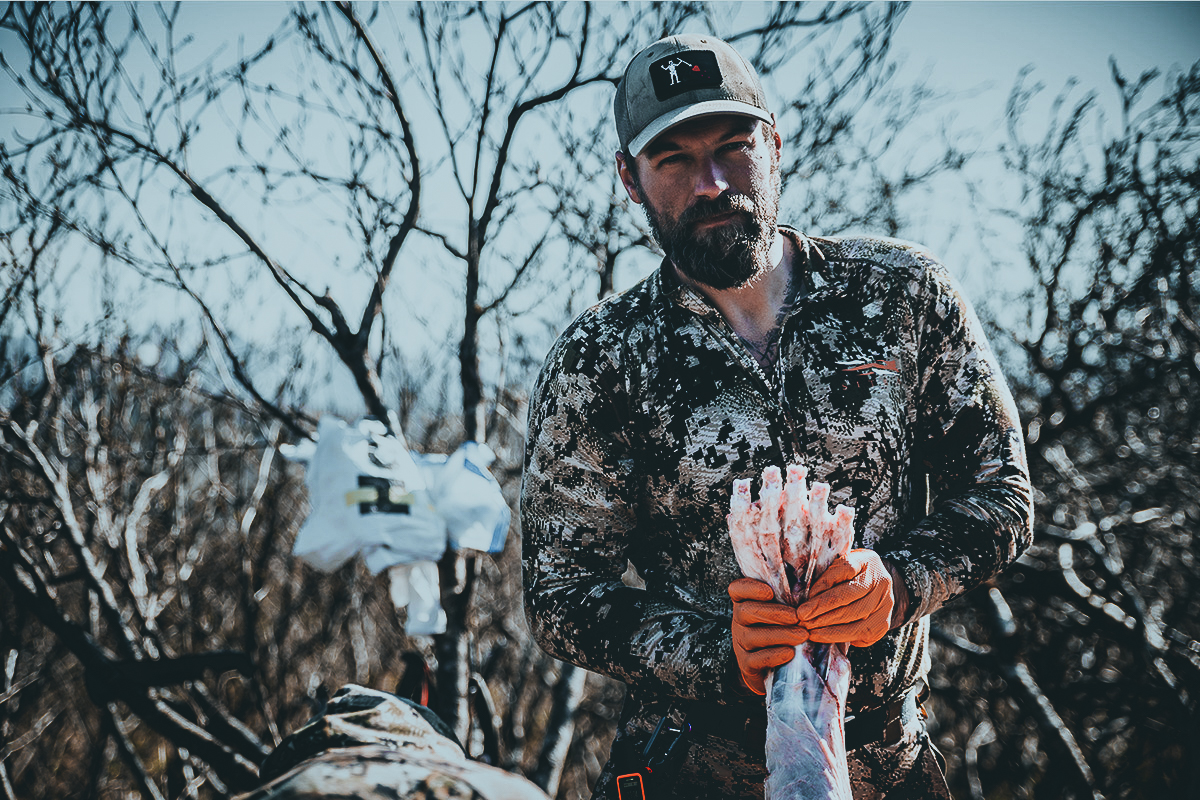
“There’s too much time spent behind a phone or a computer. It takes balls to come out here and hike all over these mountains.”
“This was a once-in-a-lifetime adventure for me,” Hafer says. “I think it’s super important for people to go out and experience adventure, to live, eat, and breathe the life we promote. It’s really easy to put taglines on shirts. It’s difficult to go out and make all this shit happen.”
“As adults, we don’t let adventure and imagination drive who we are. That’s something Evan is really good at,” Stark says. “We’re going to embrace adventure.
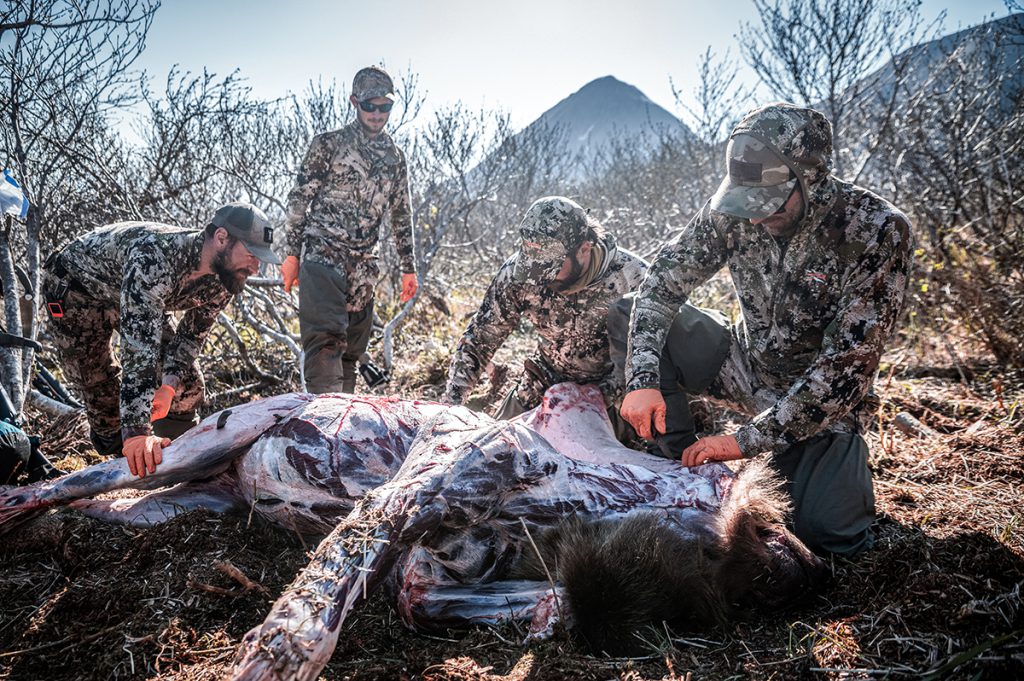
“We know if we don’t do things like this, we lose touch with part of who we are. We have to do these things that tap into the foundation of who we are as humans. That’s exactly what this trip was for us.
“This is who we are, these are the things that we do, and we do them together.”
Subscribe to the FRA YouTube channel now and watch the whole BRCC Alaska Bear Hunt video series!
READ NEXT – Feds Move Closer to Grizzly Bear Delisting




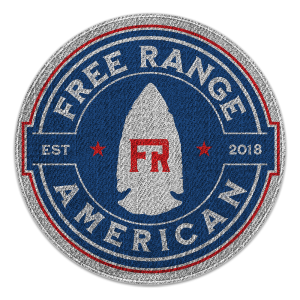
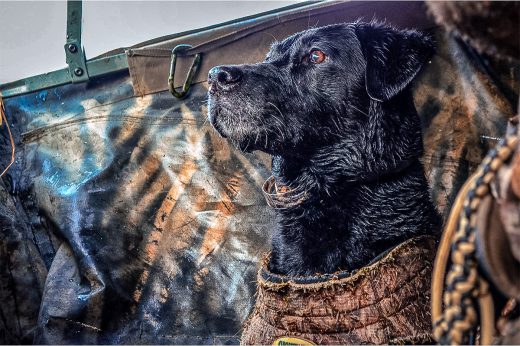




Comments